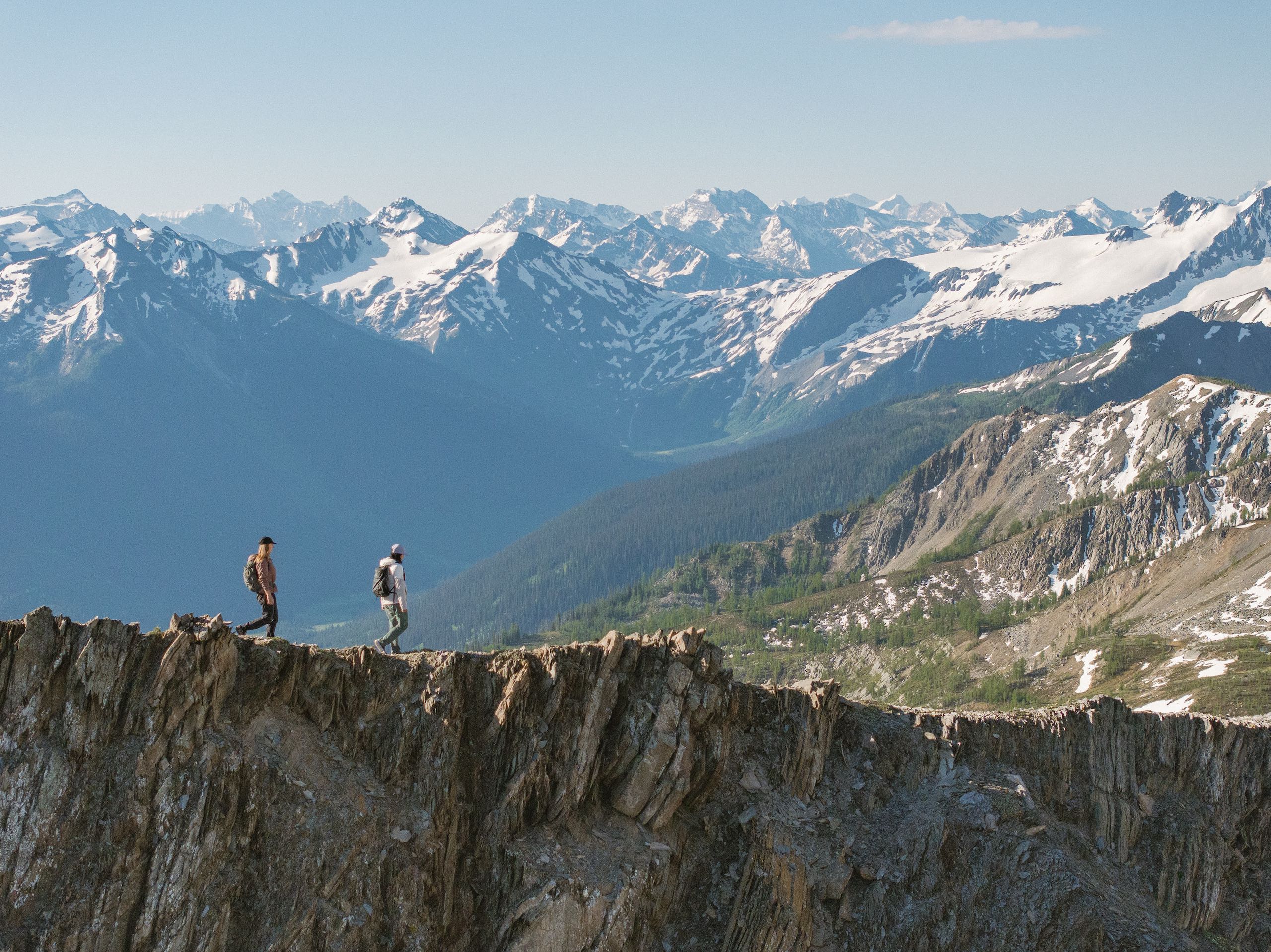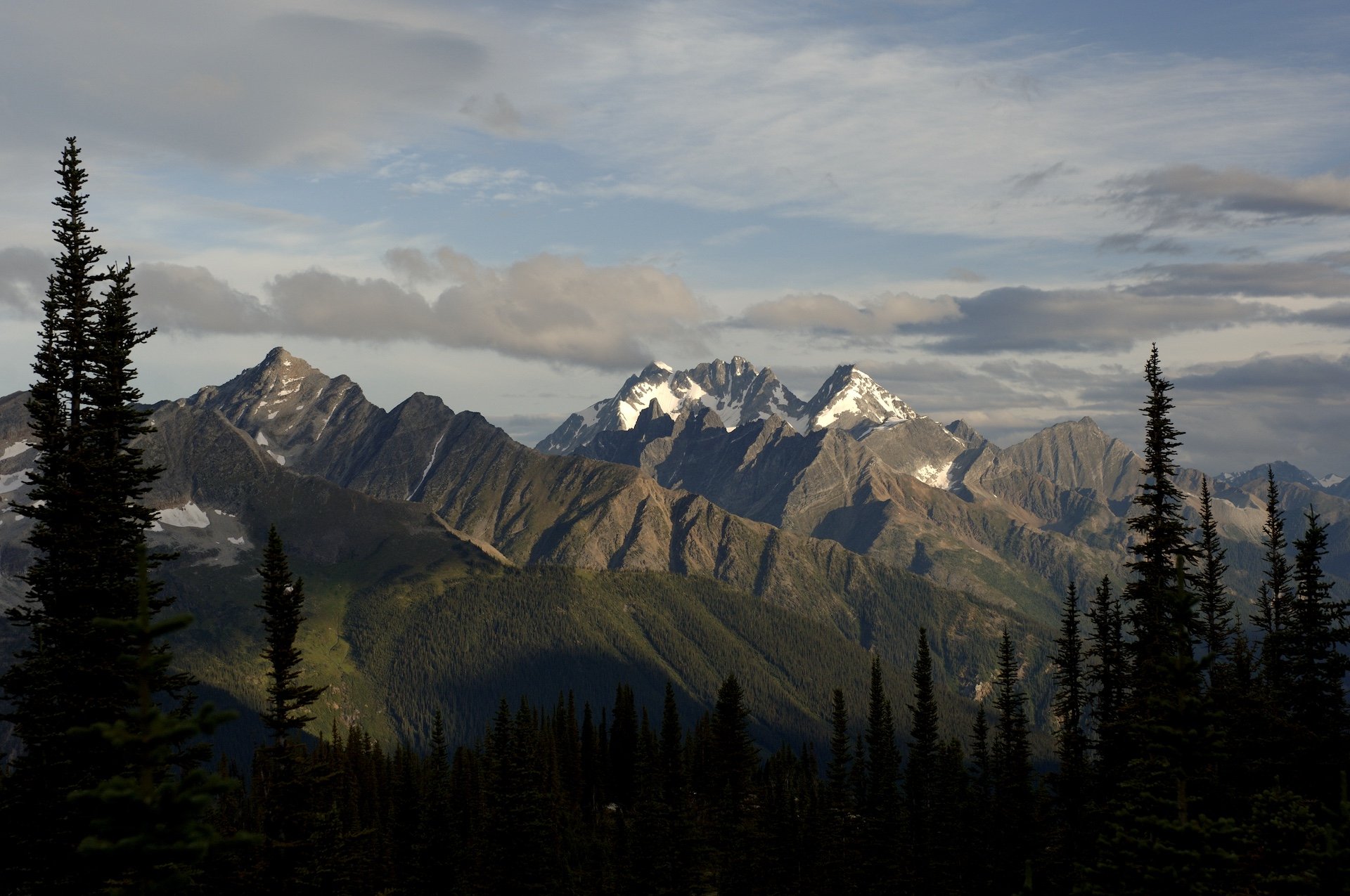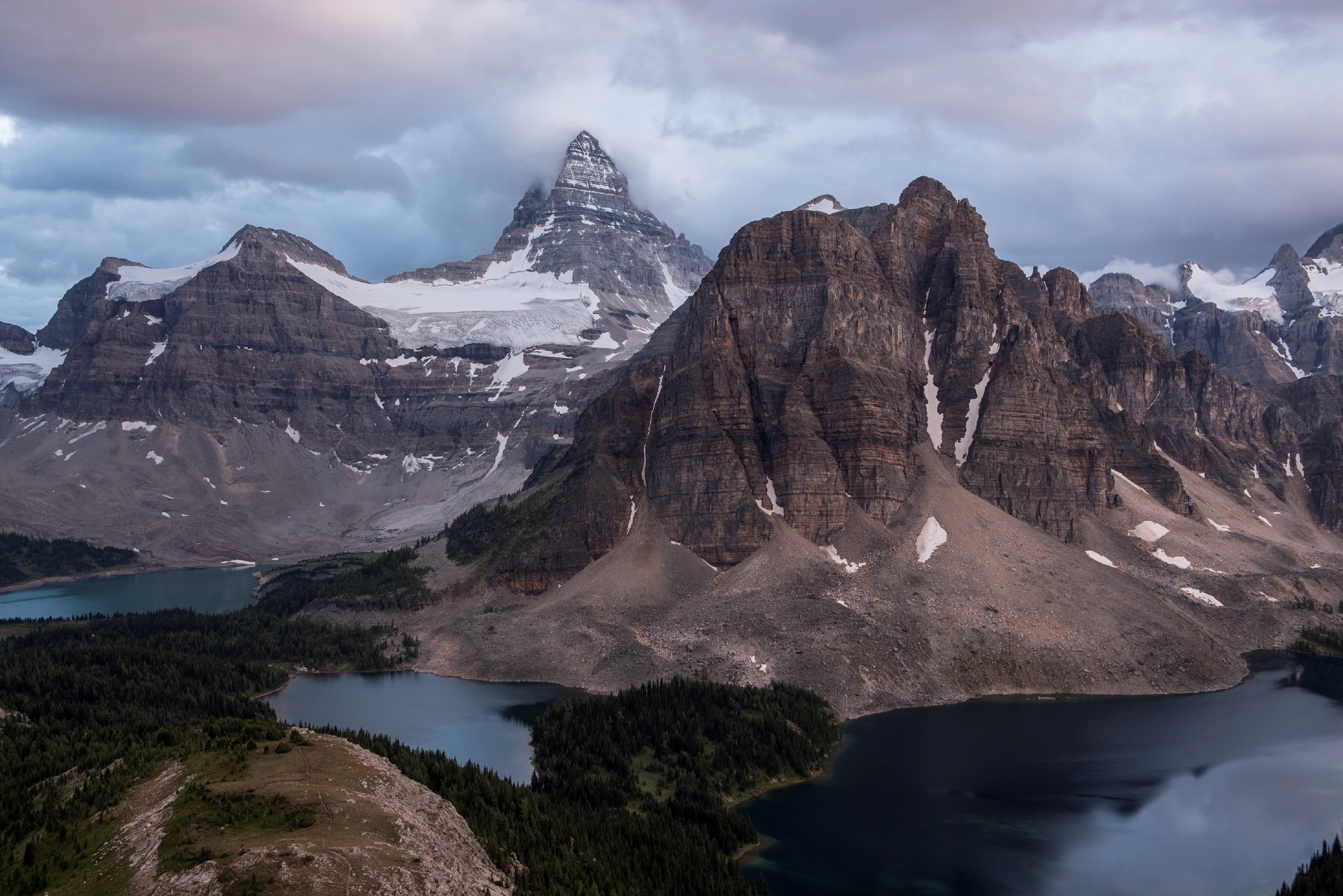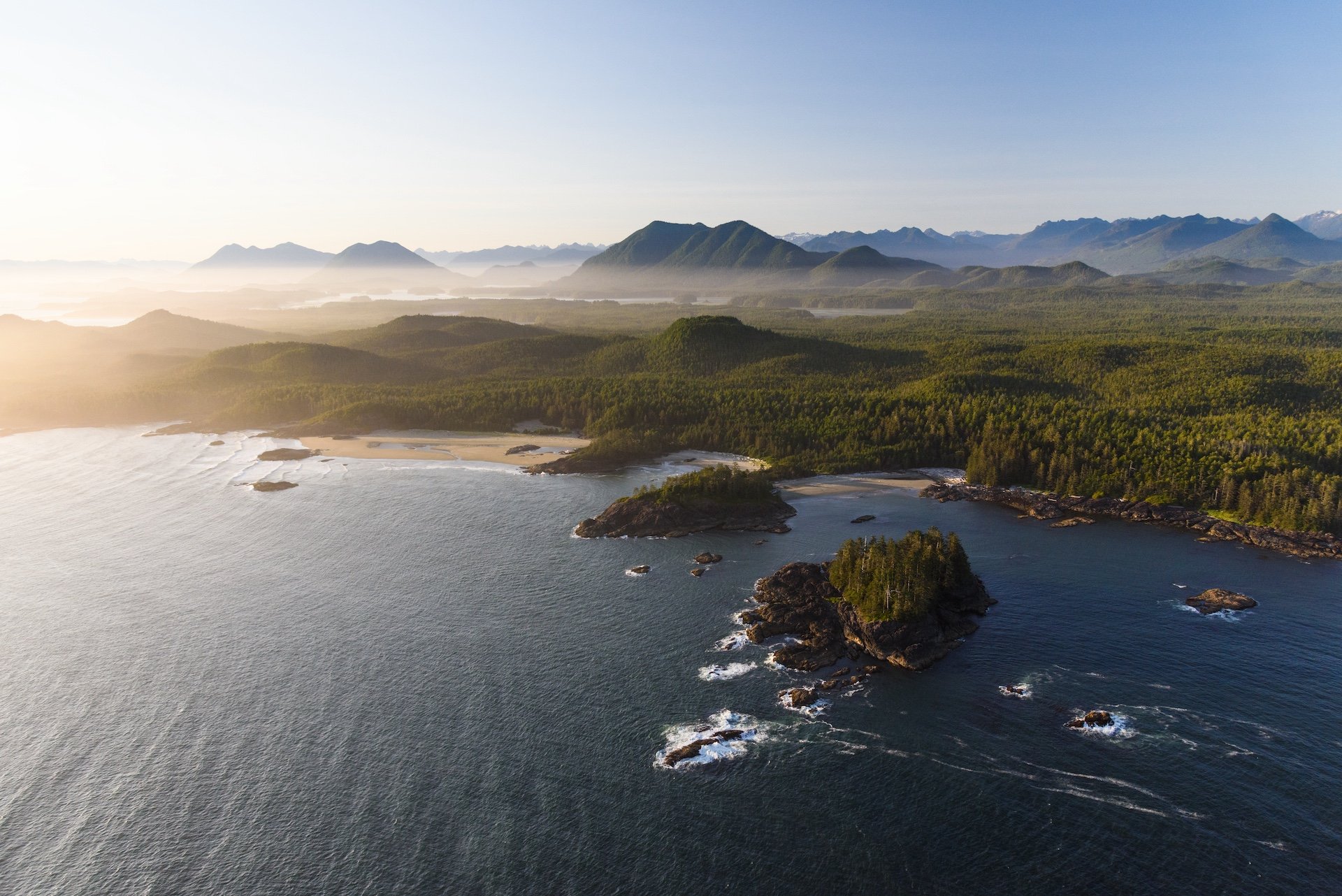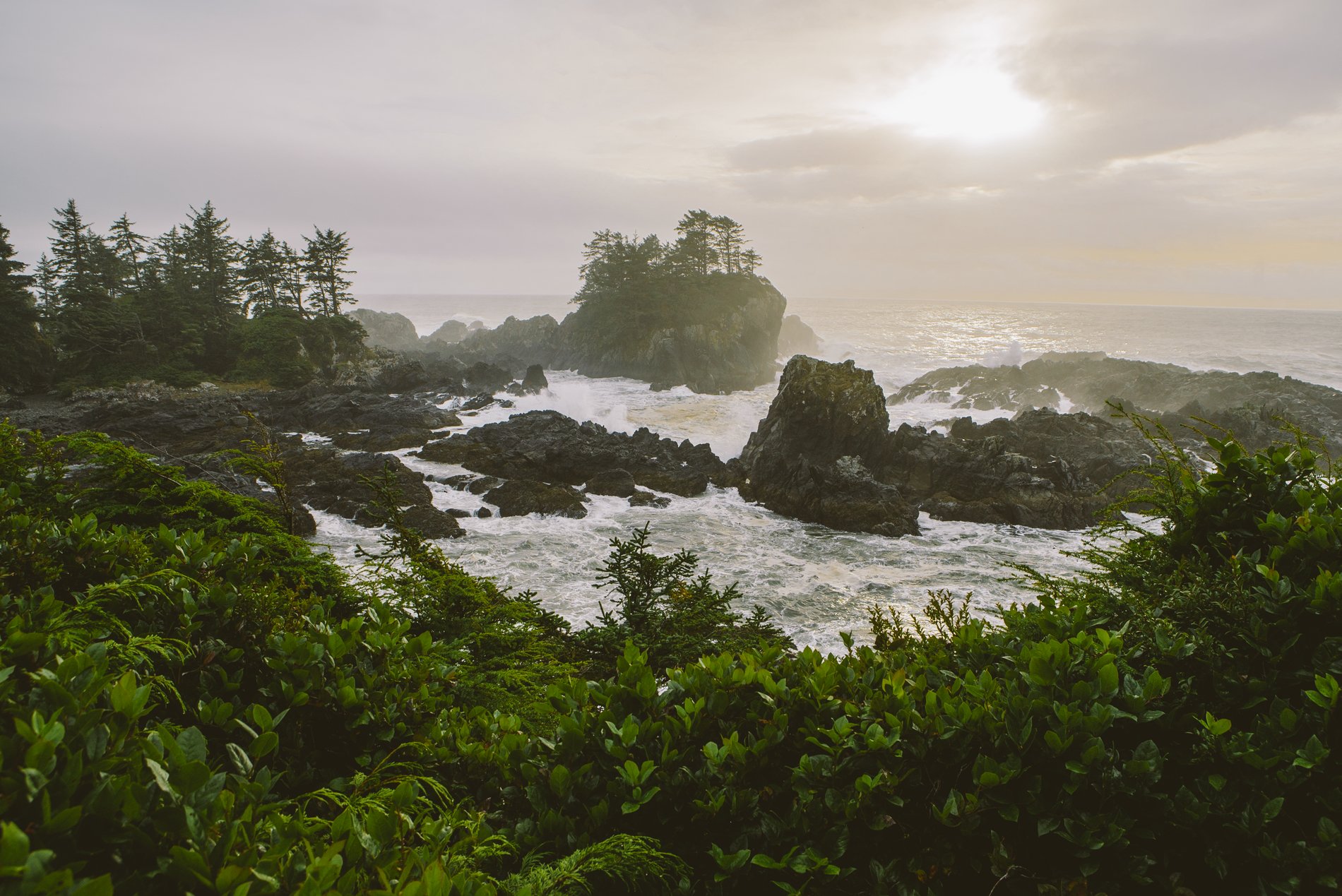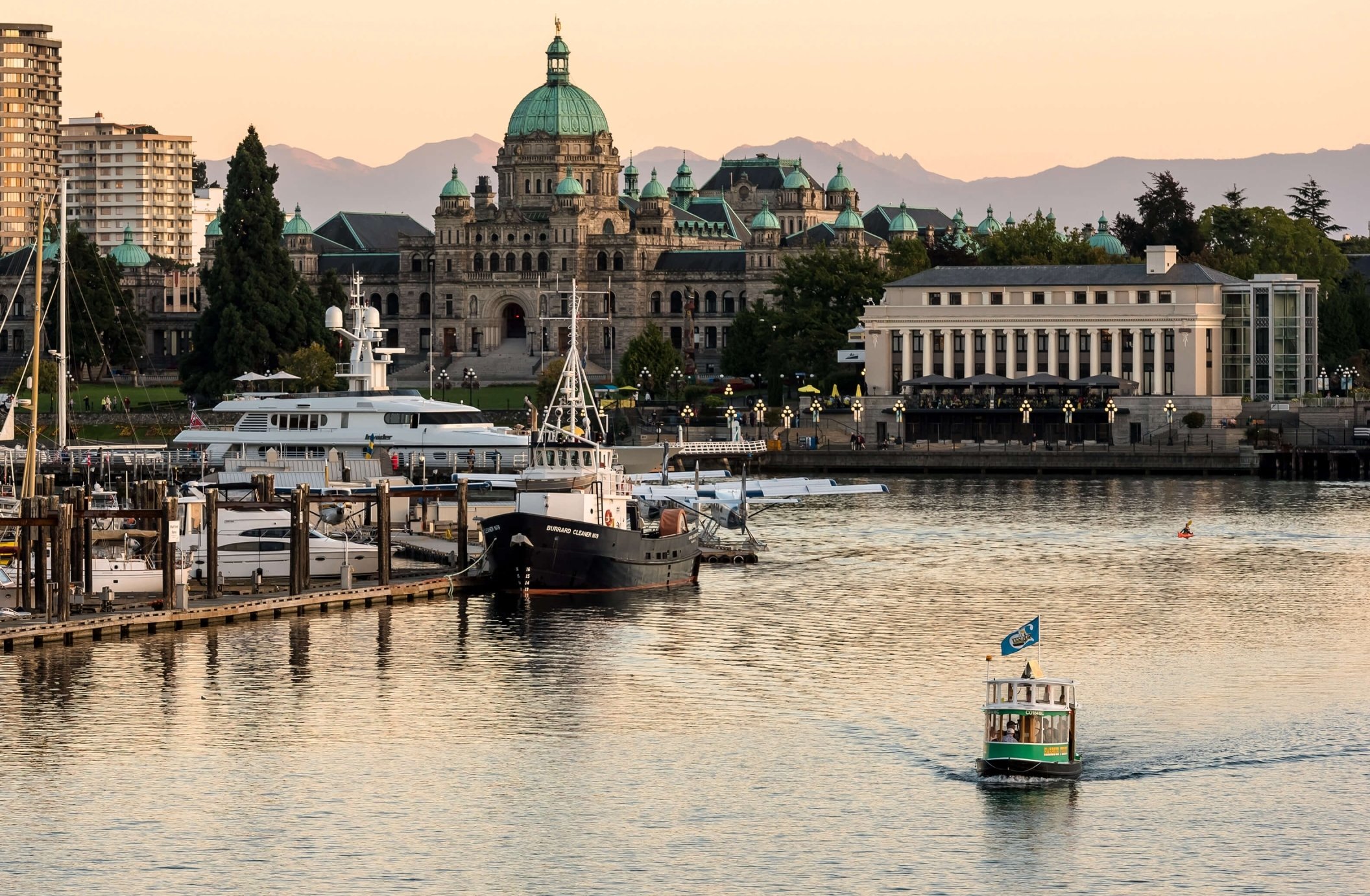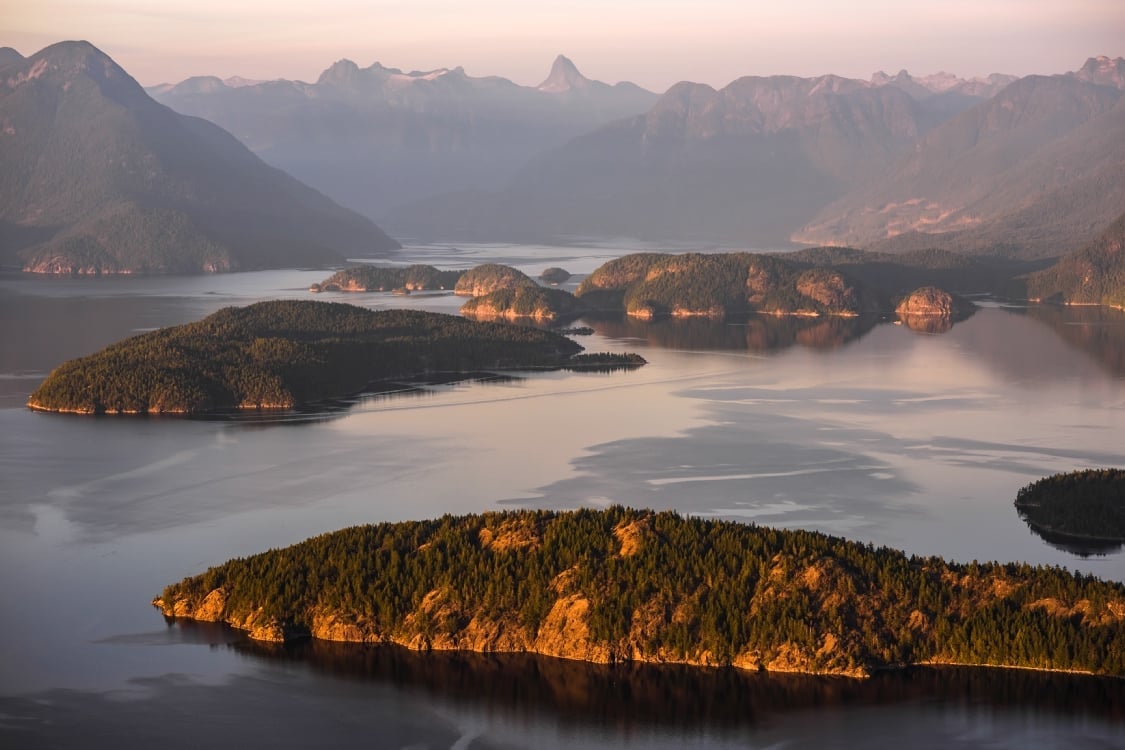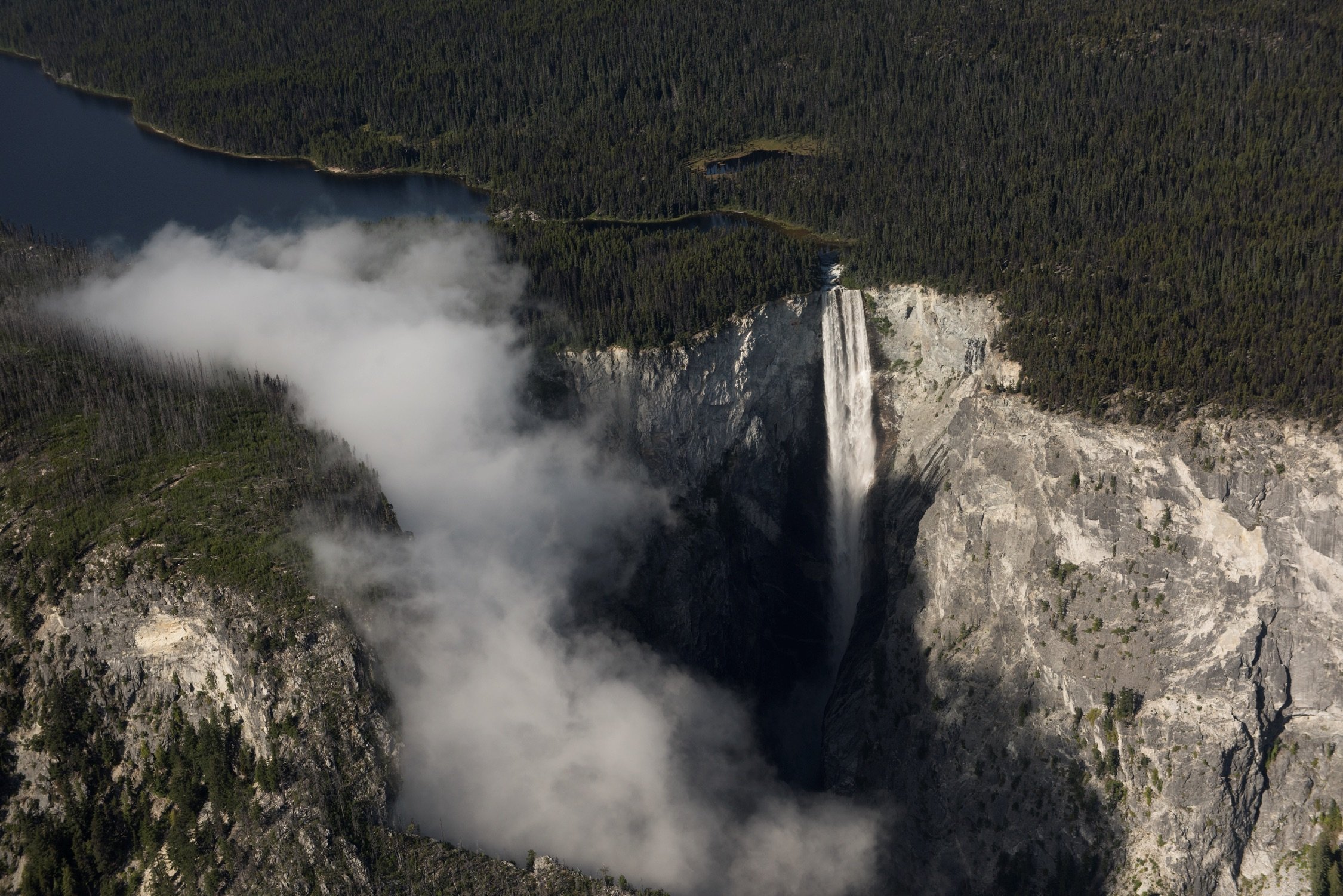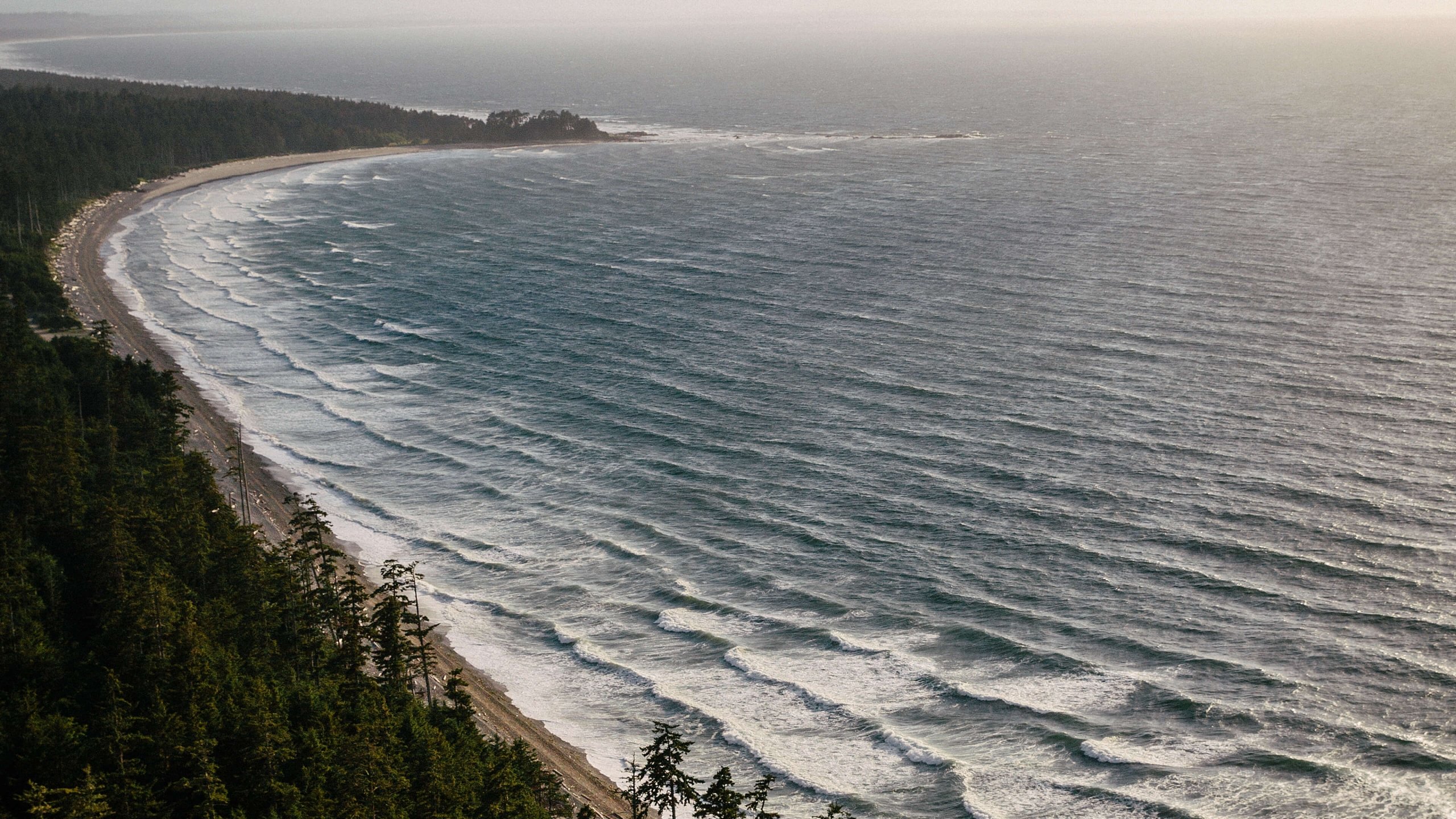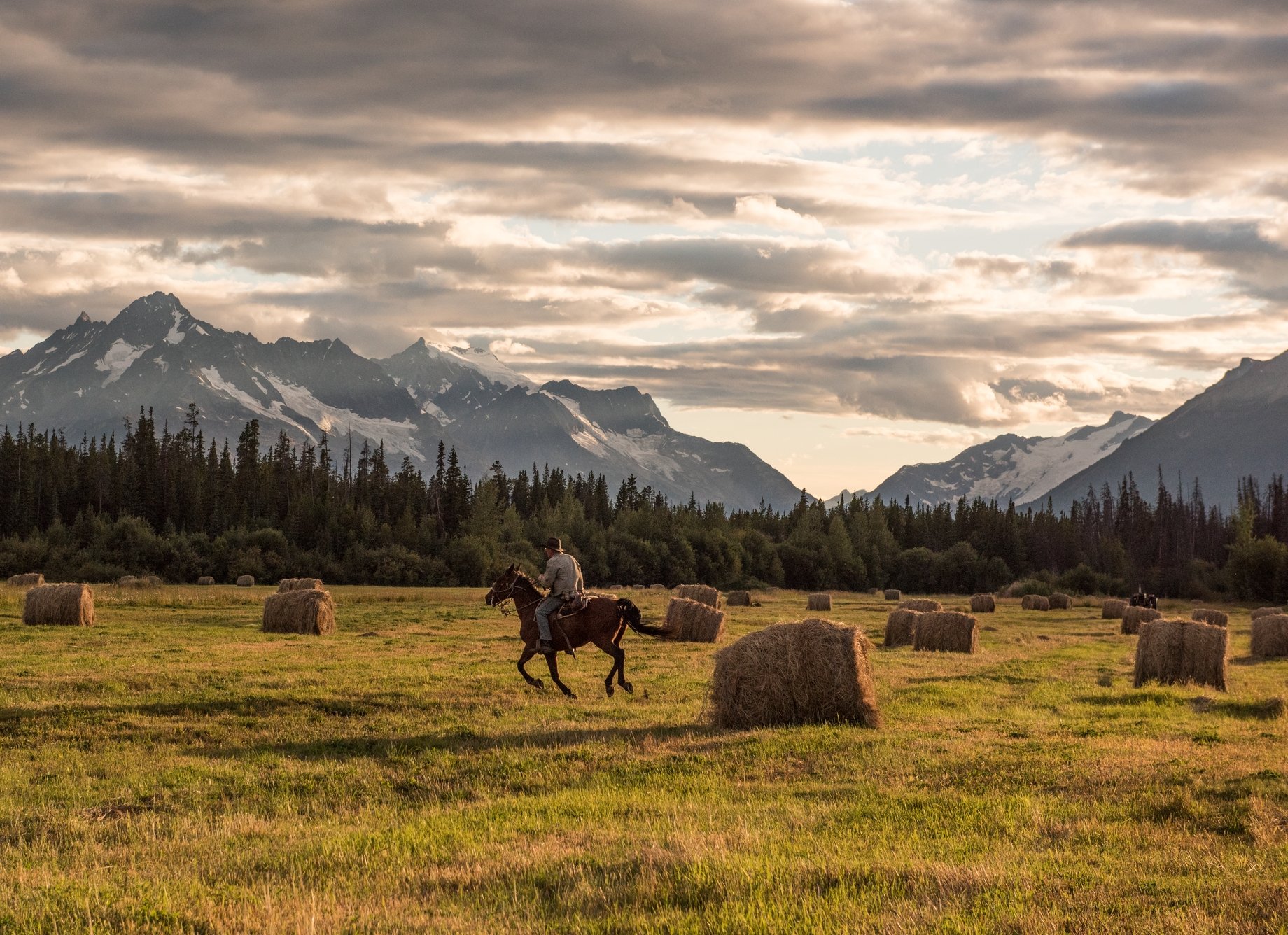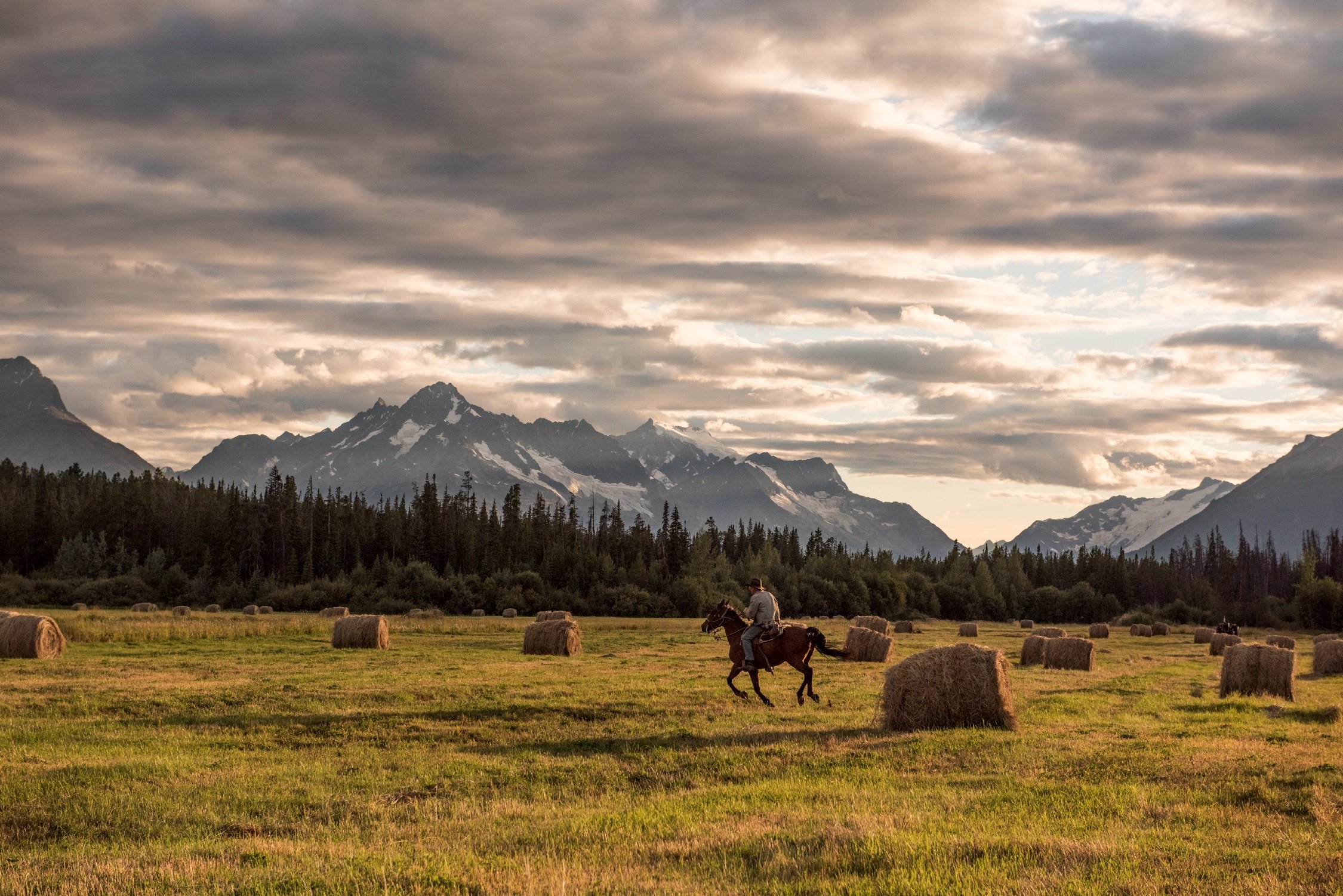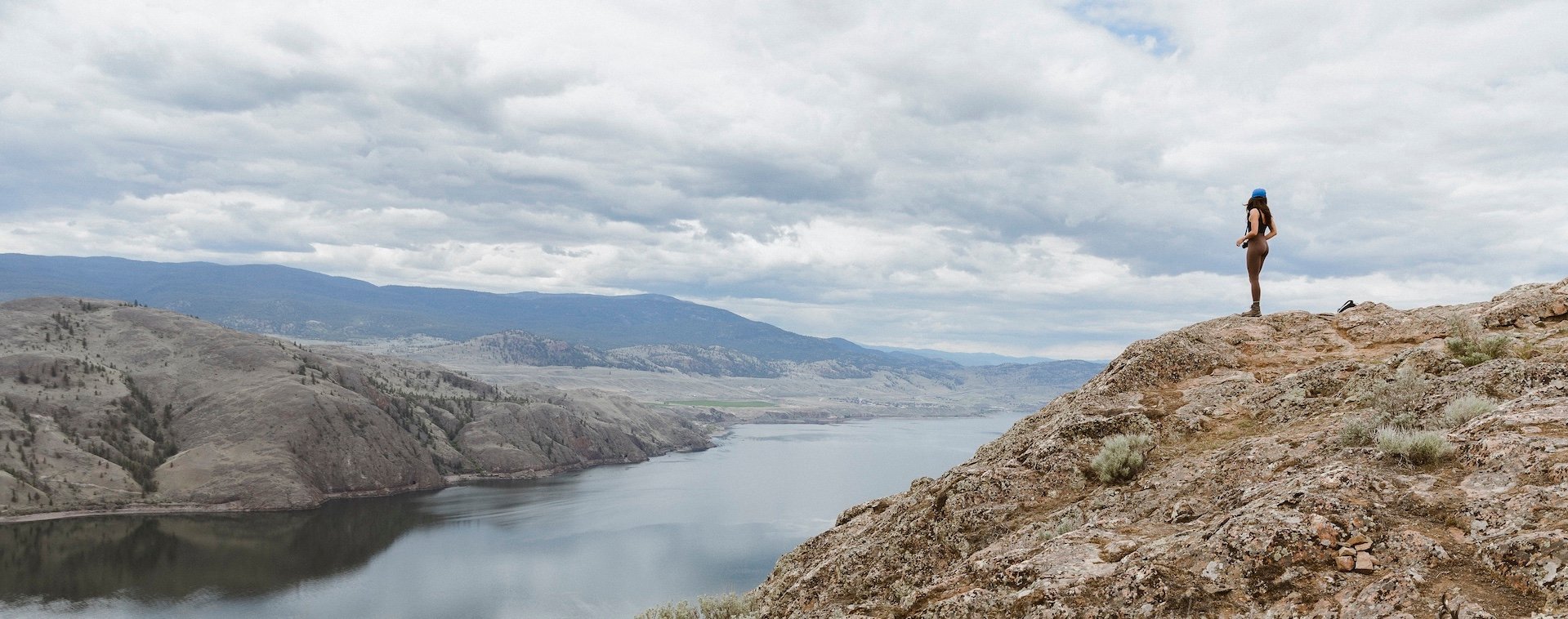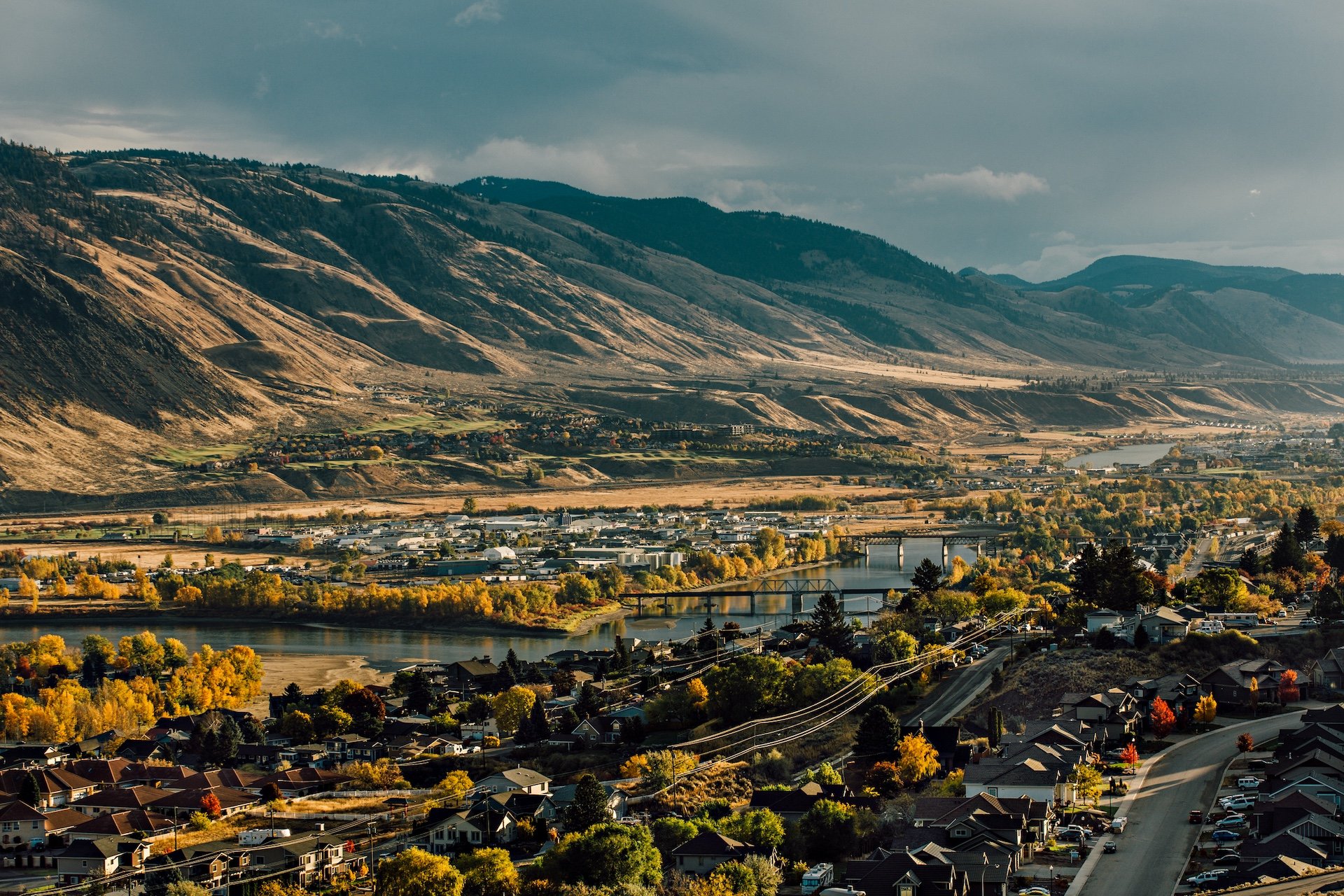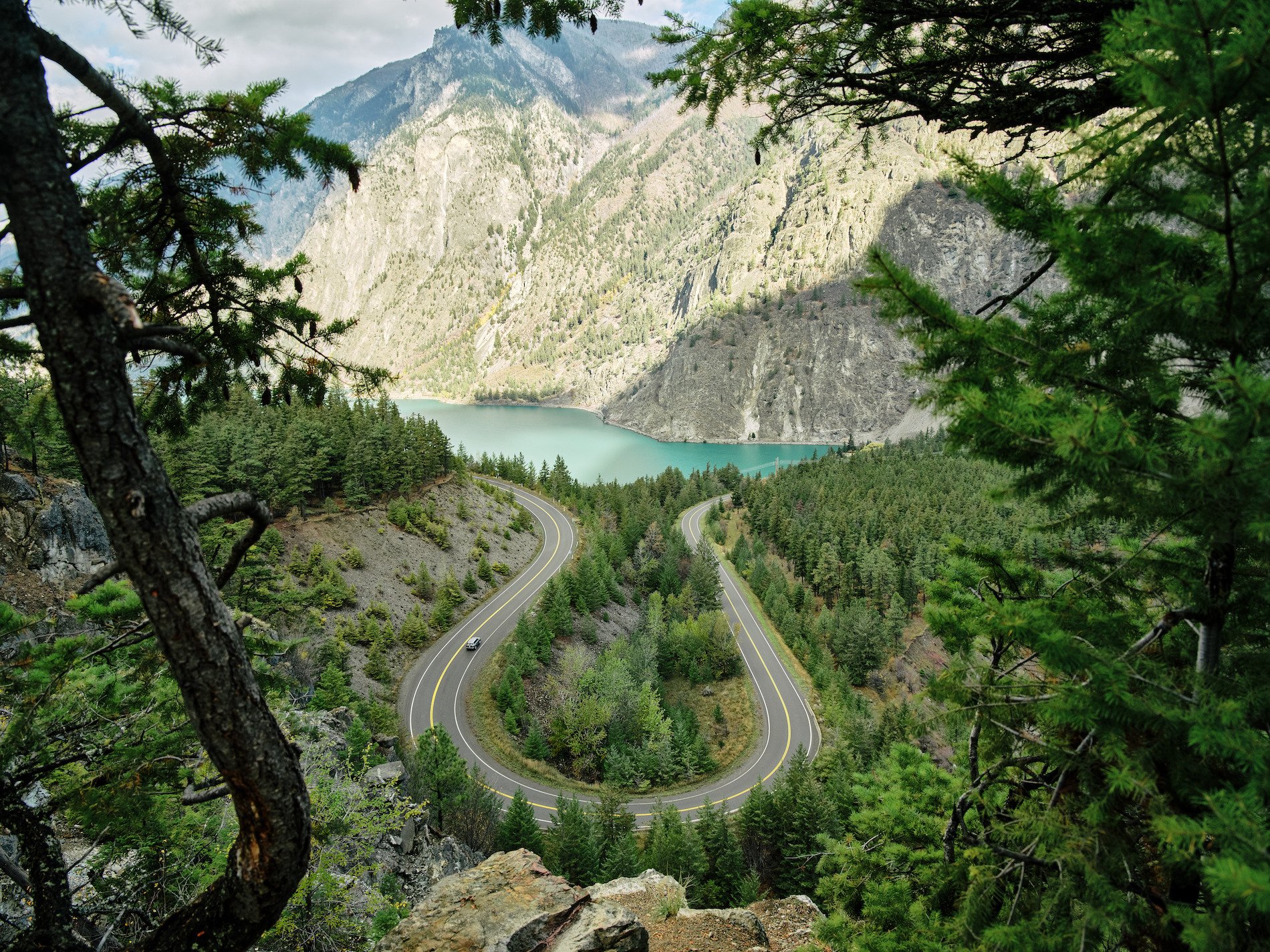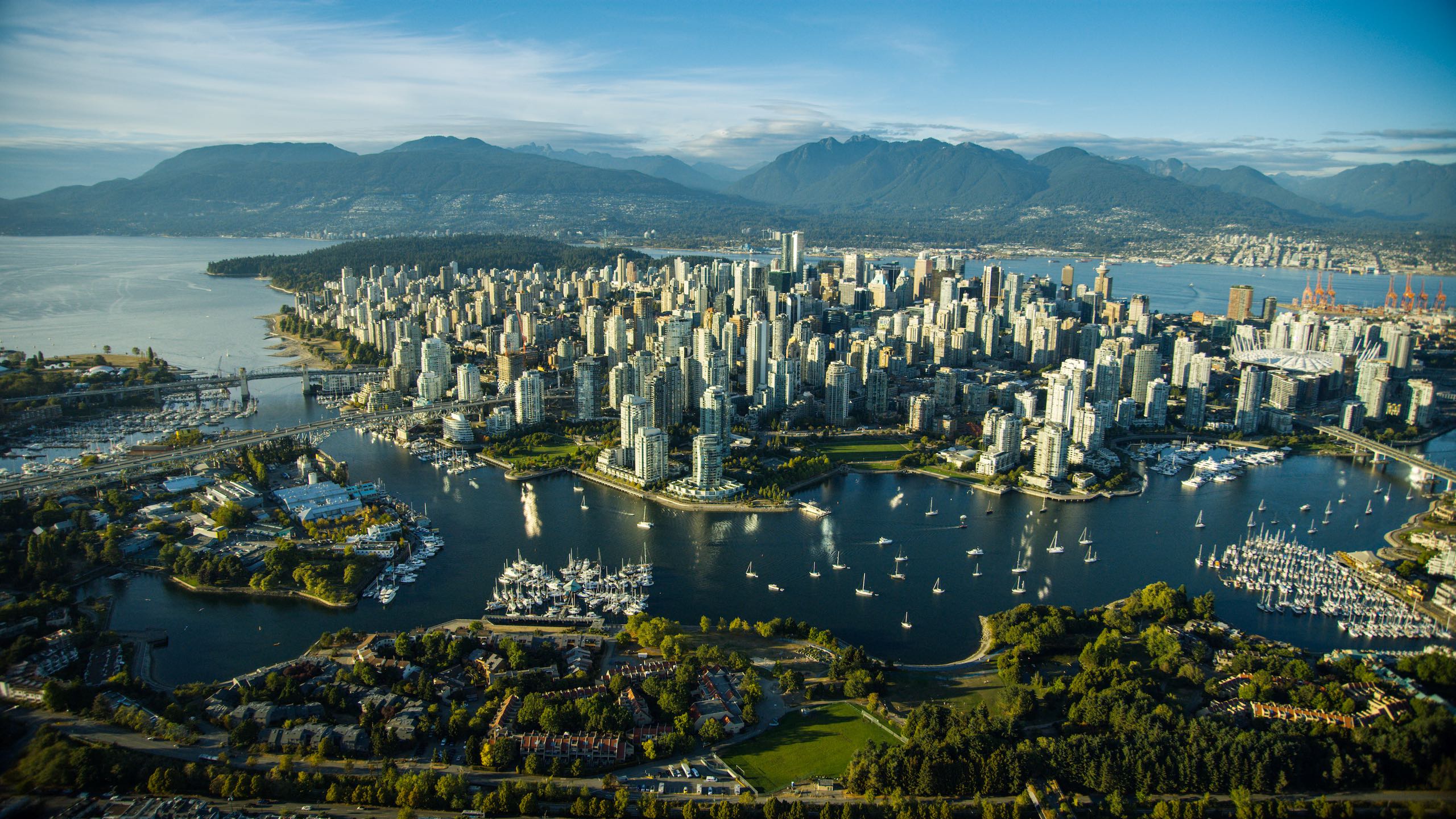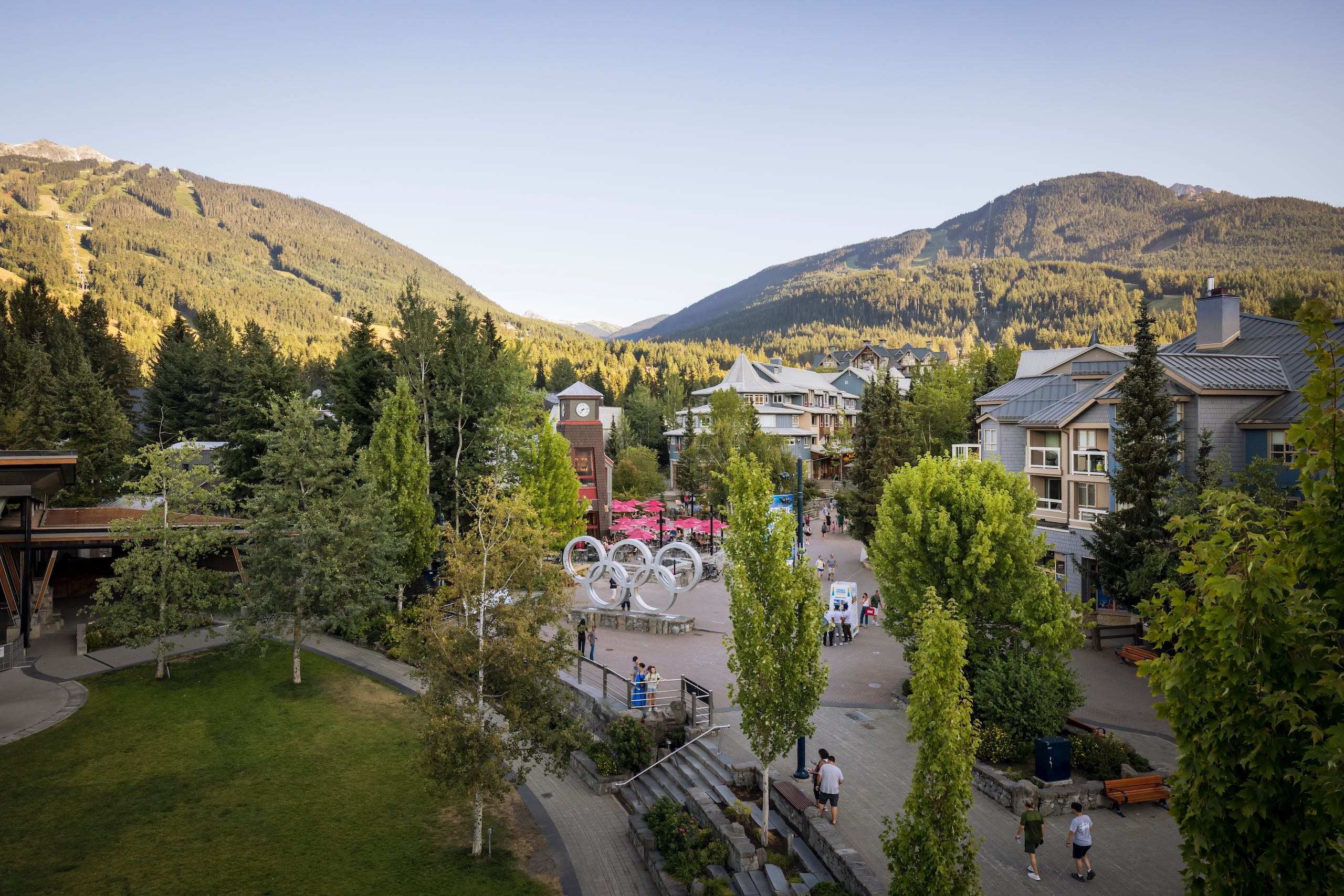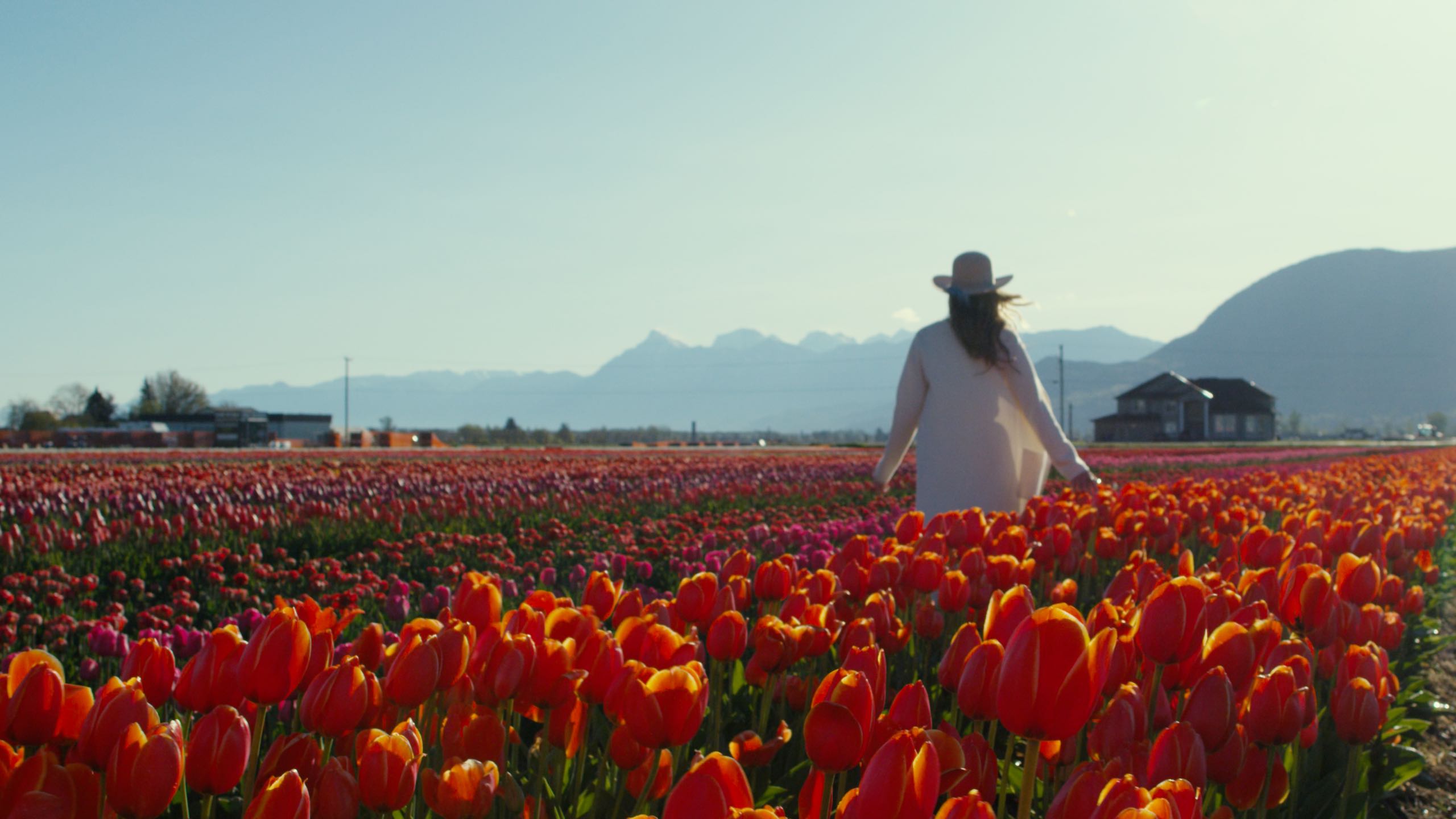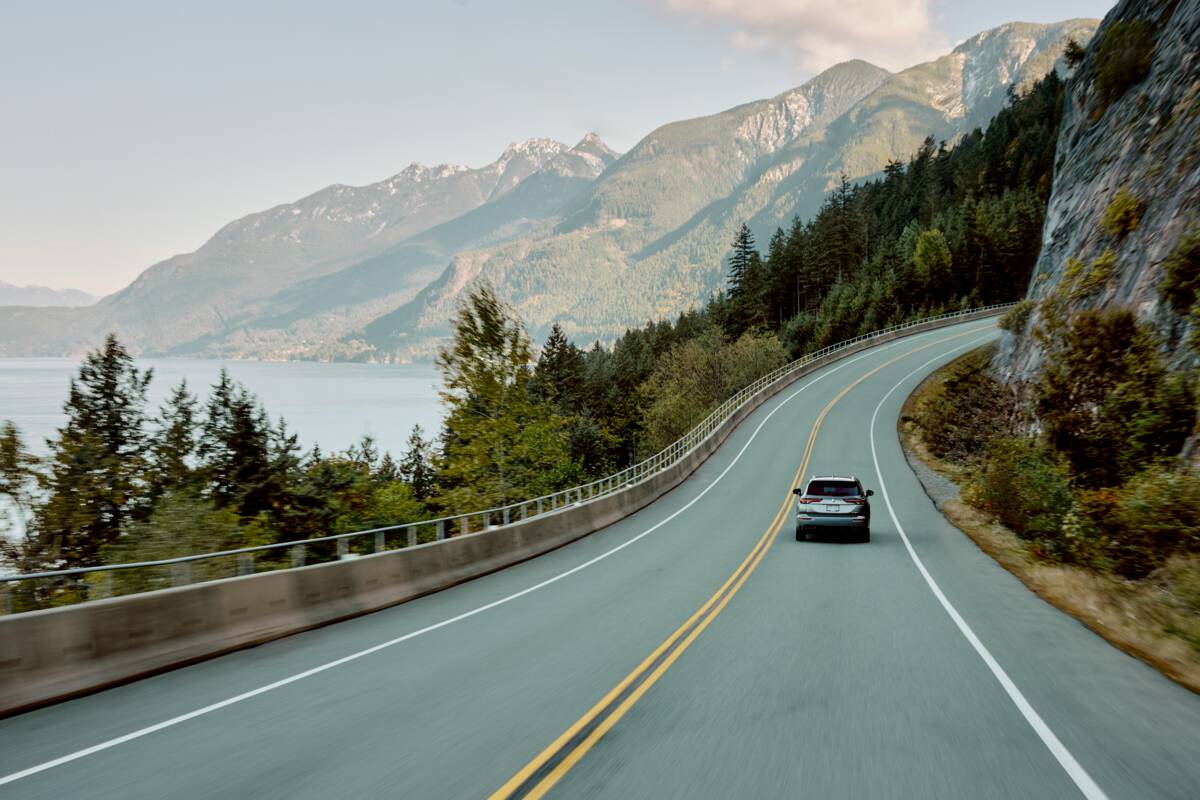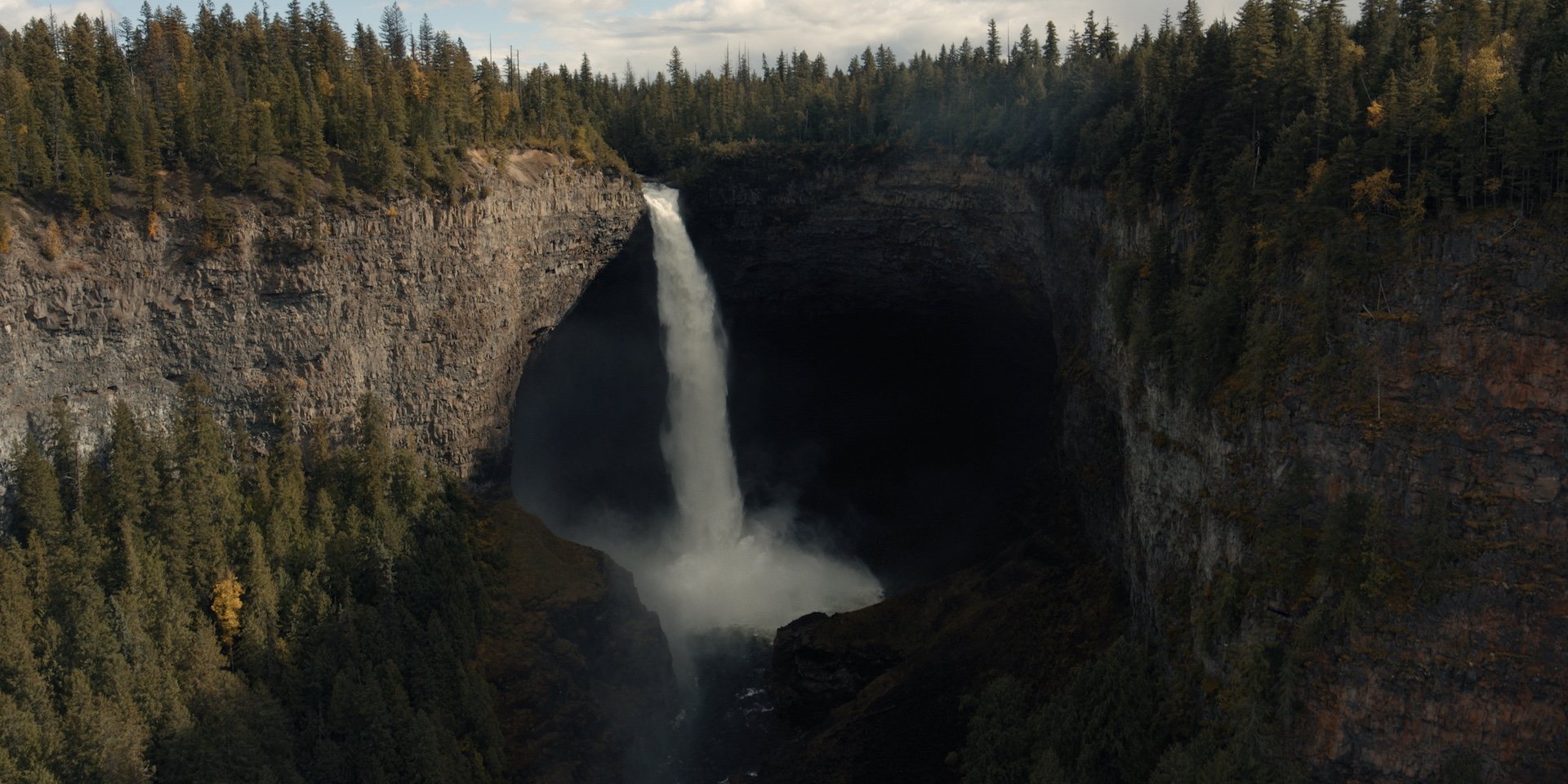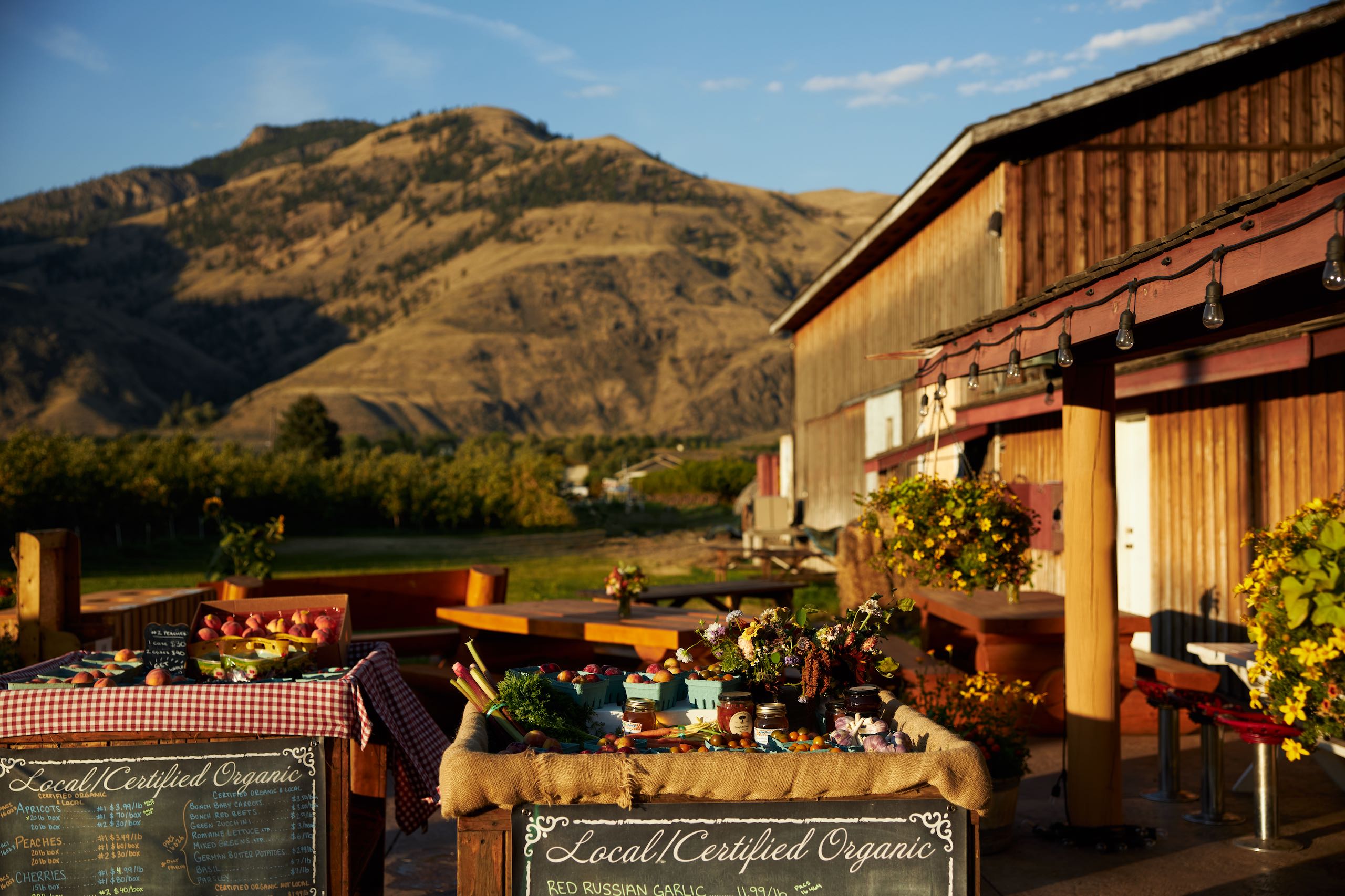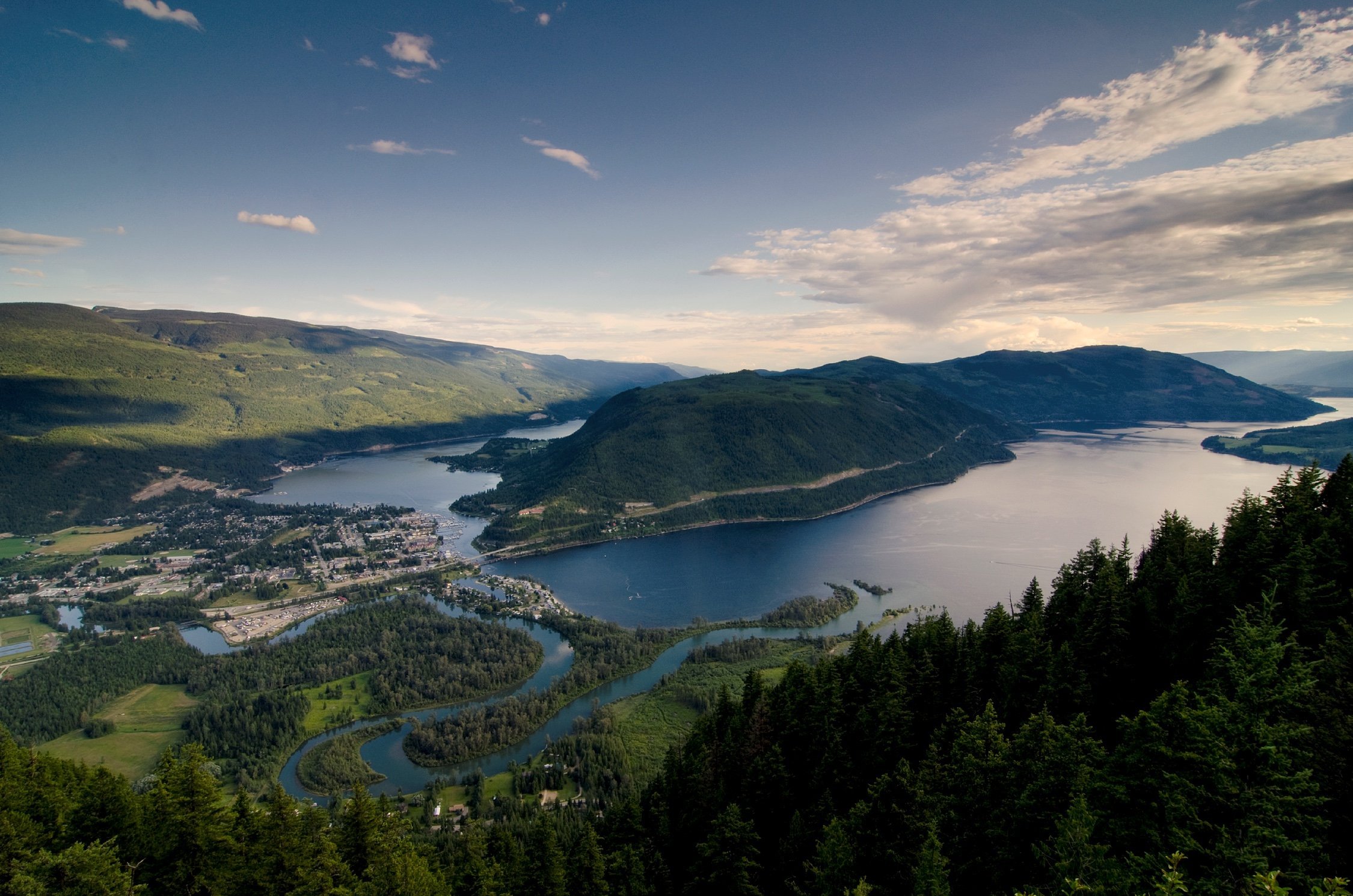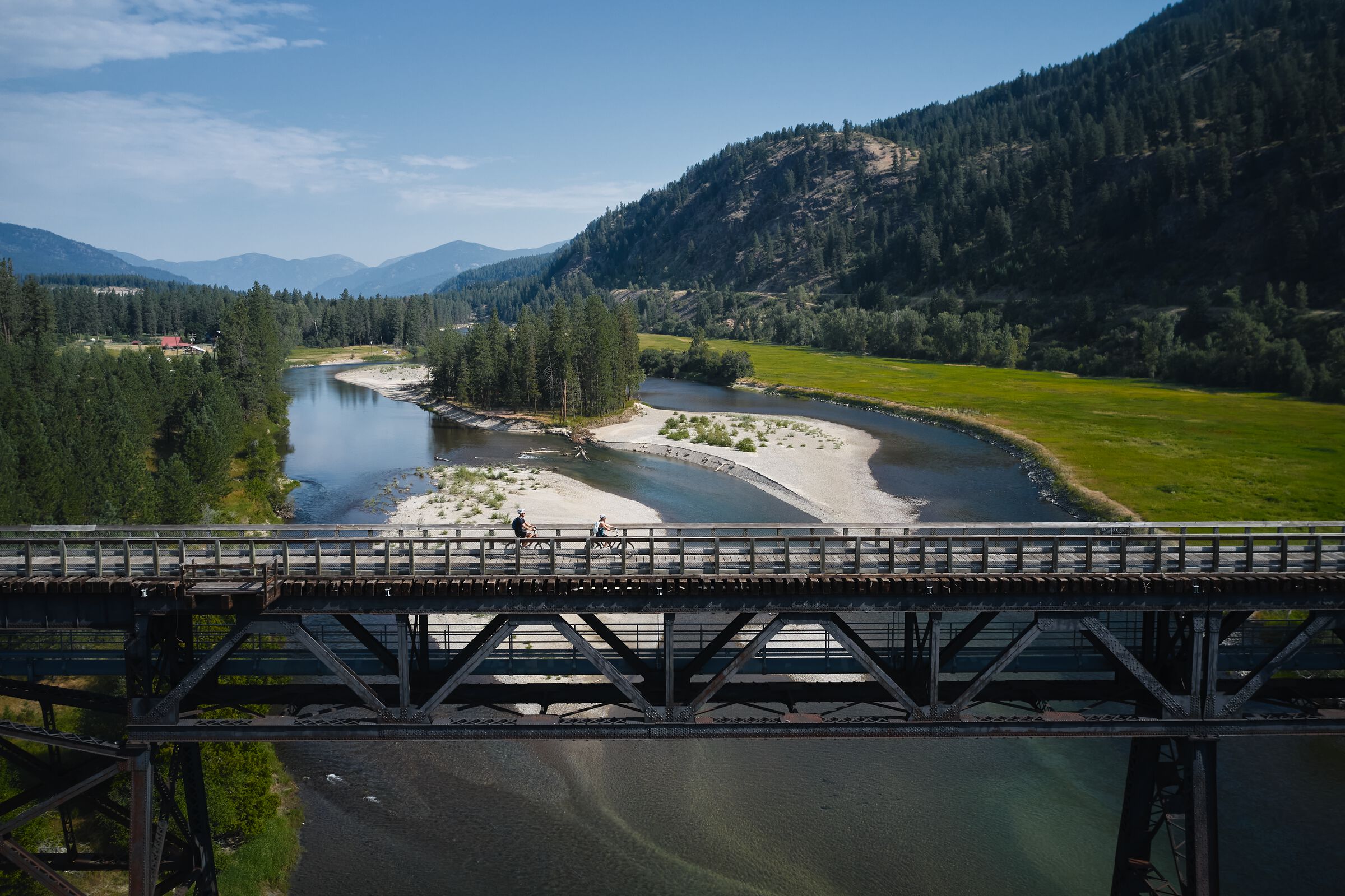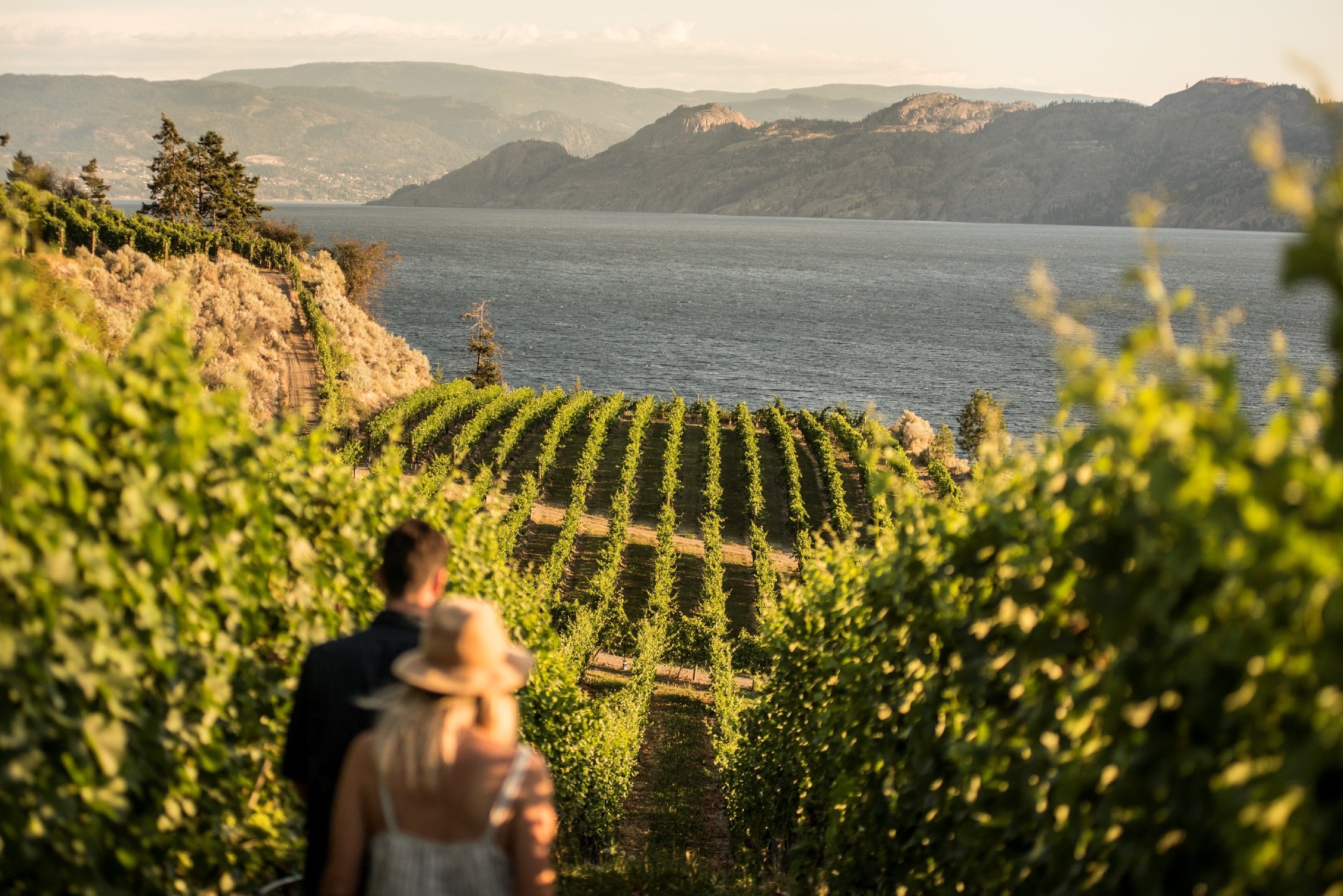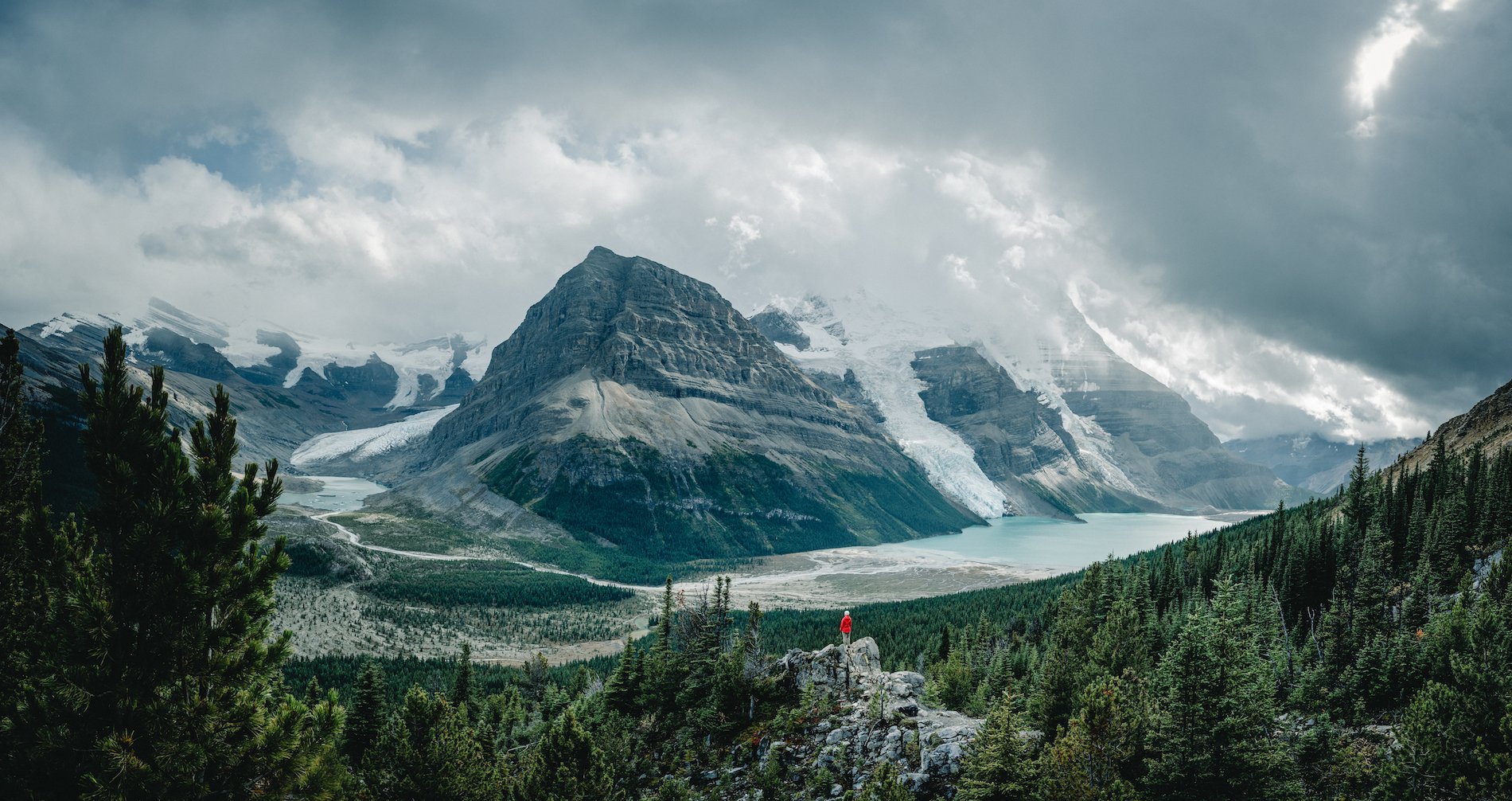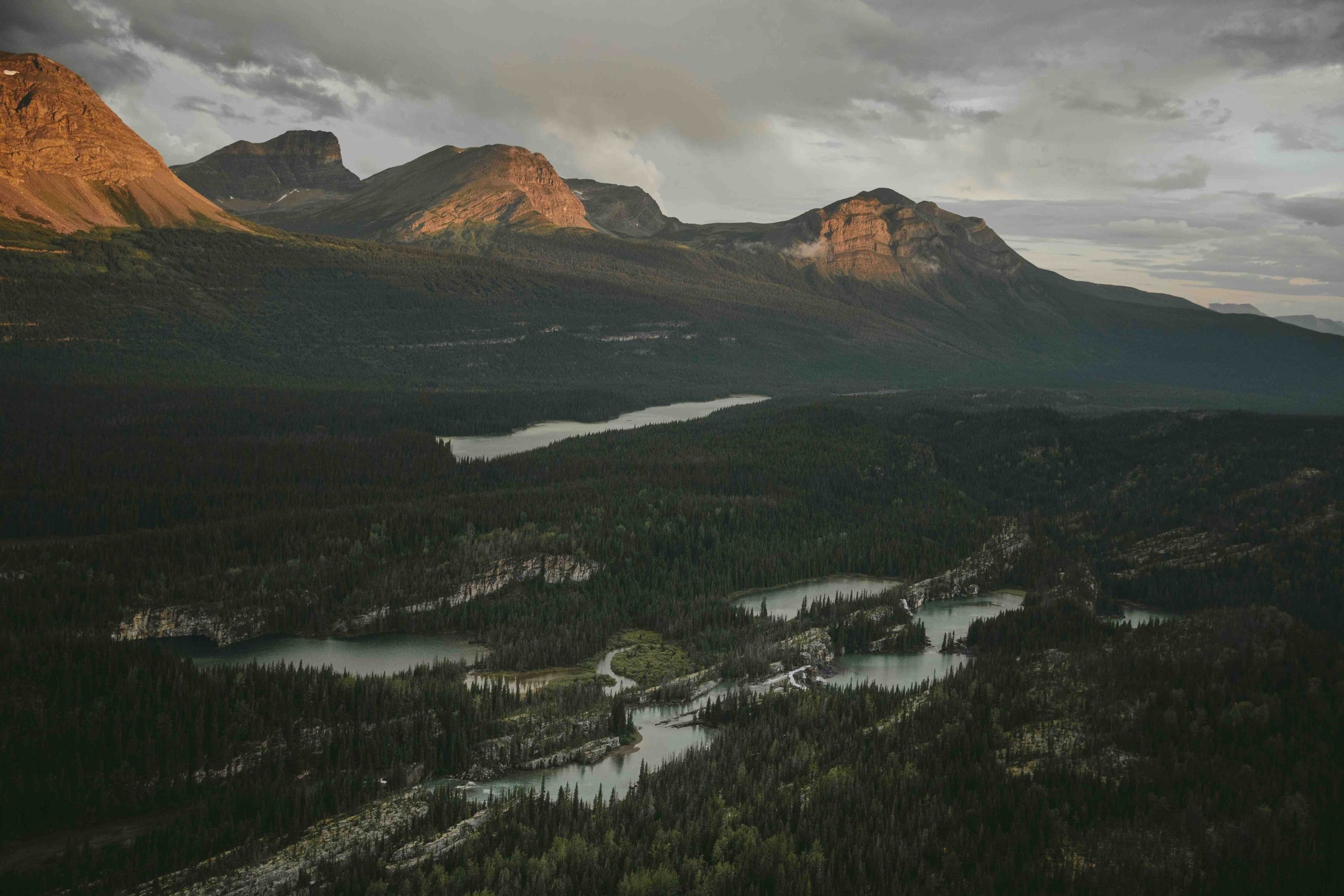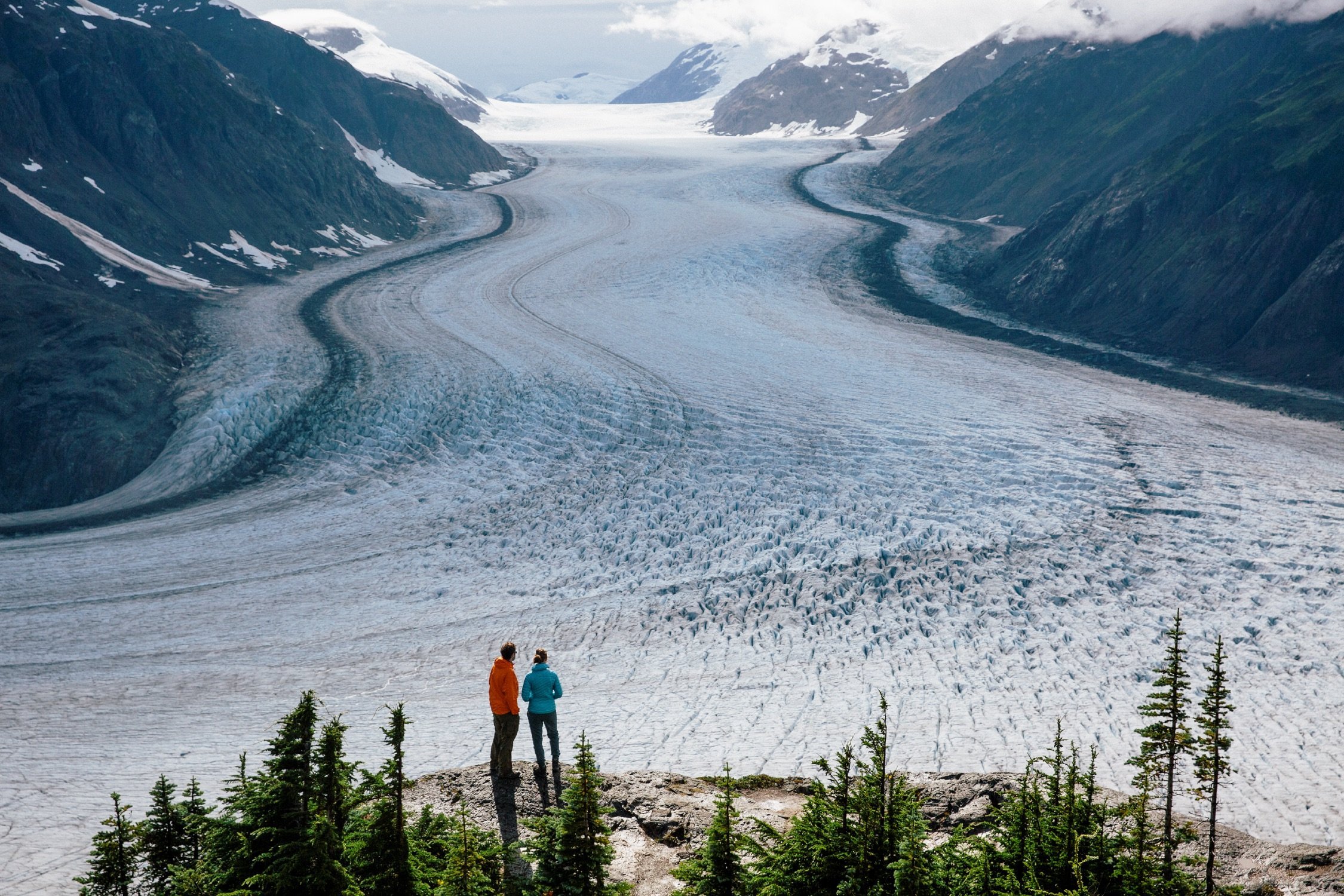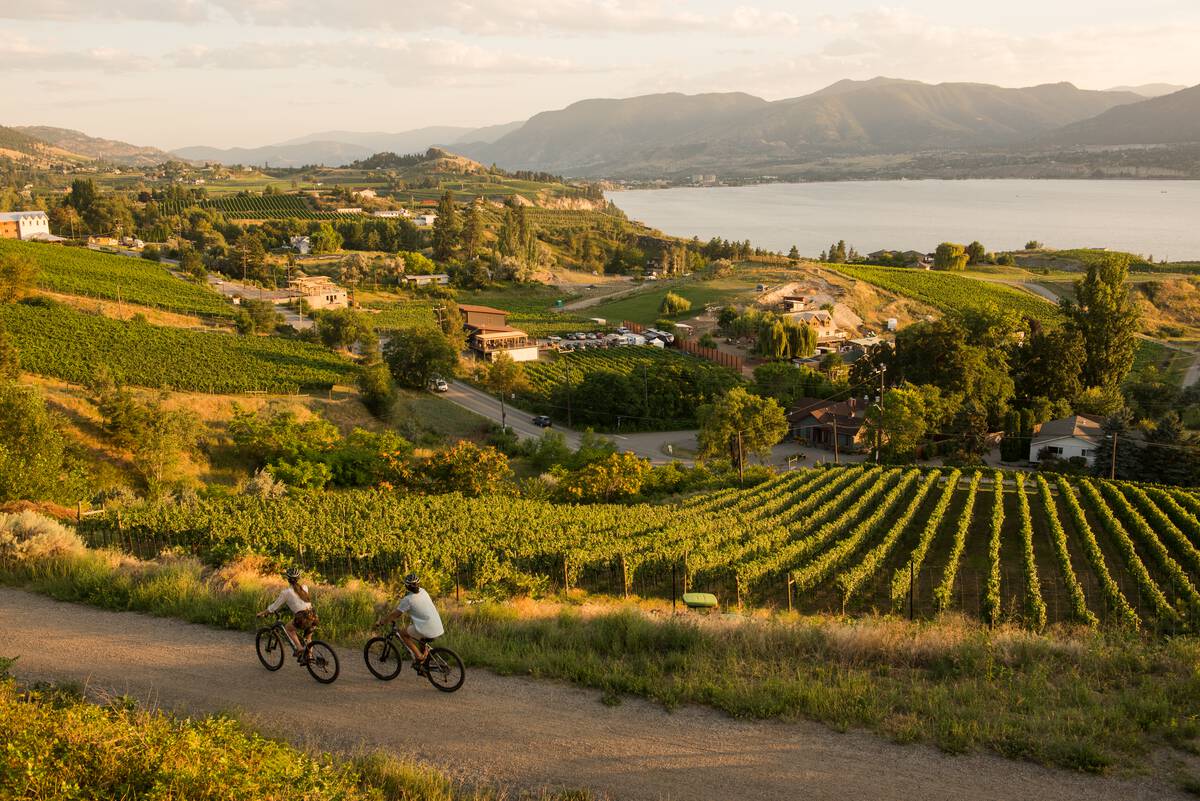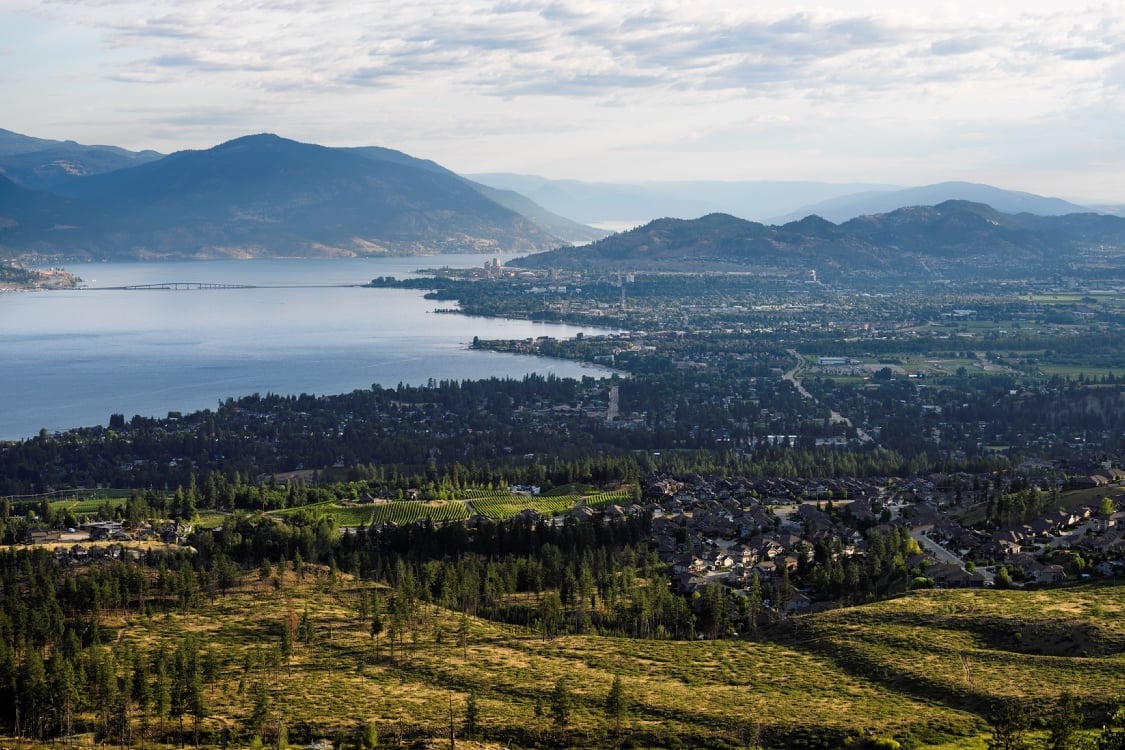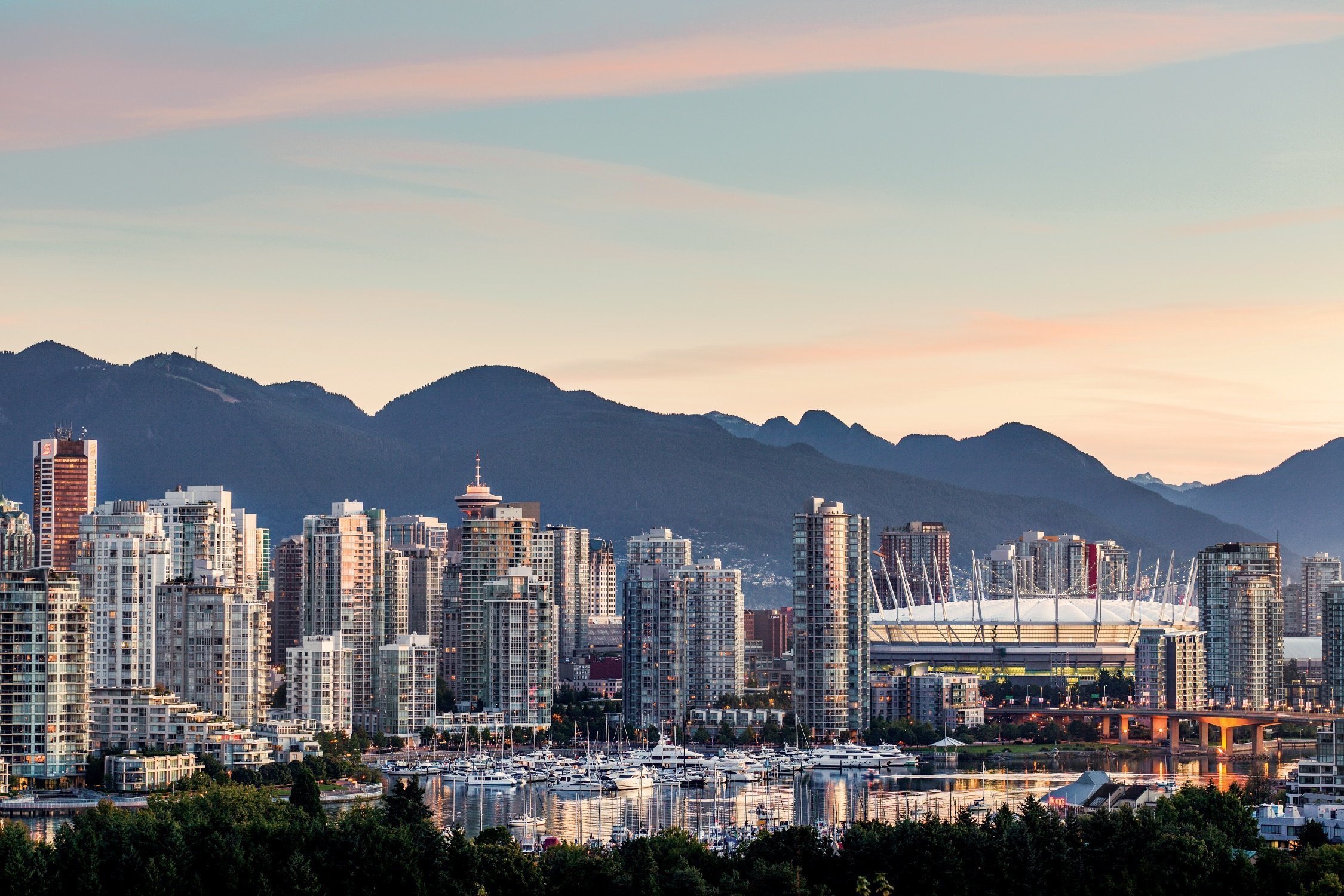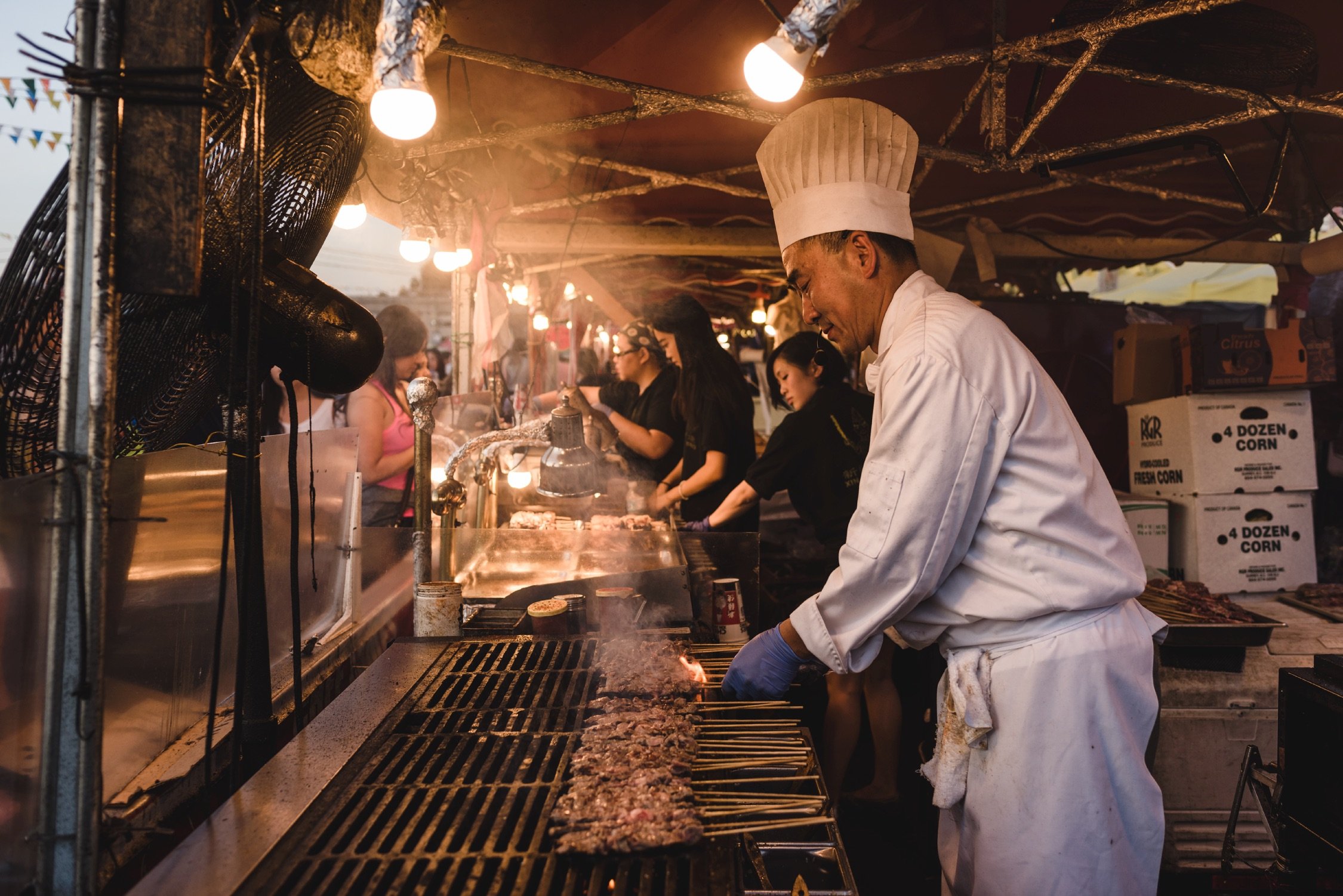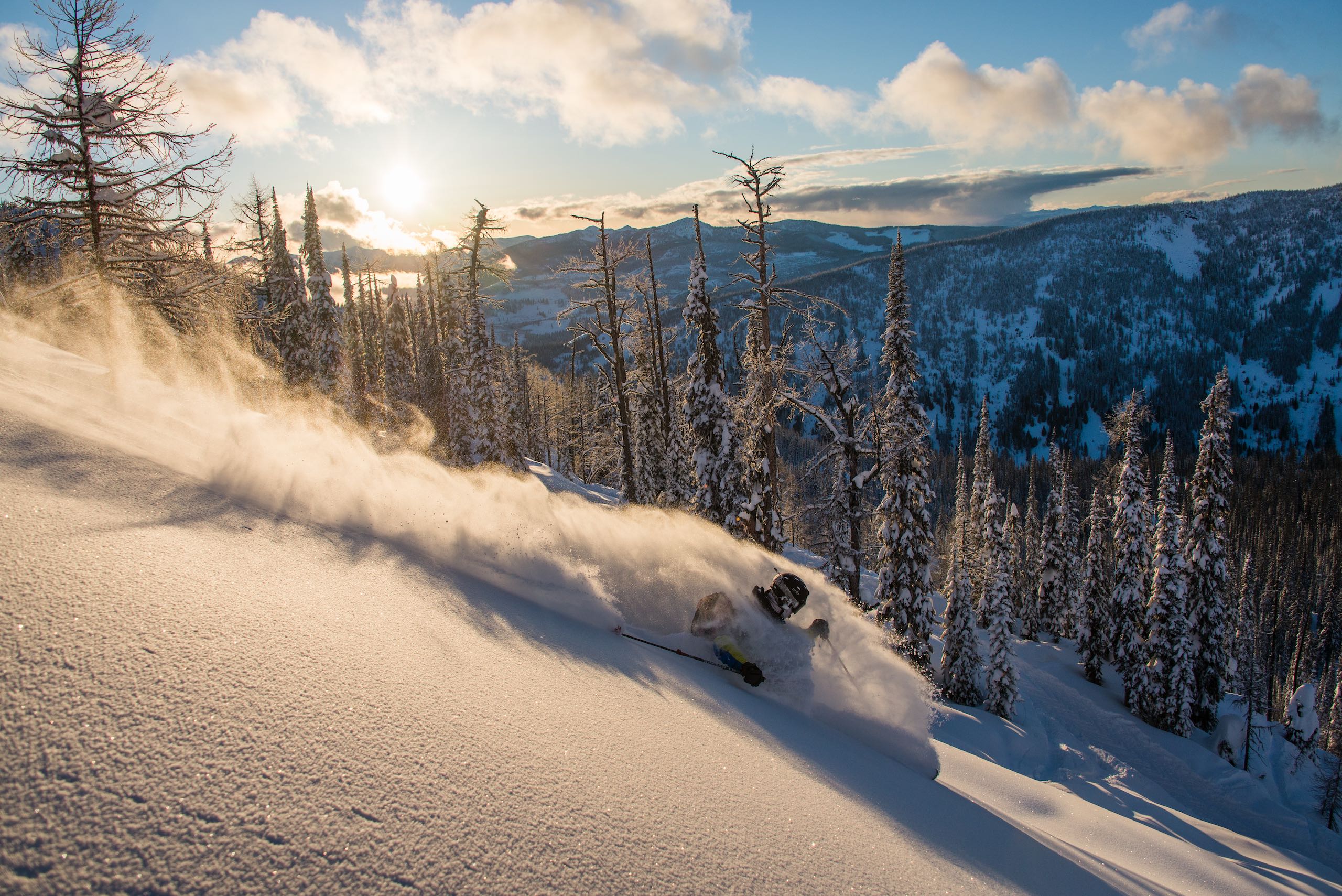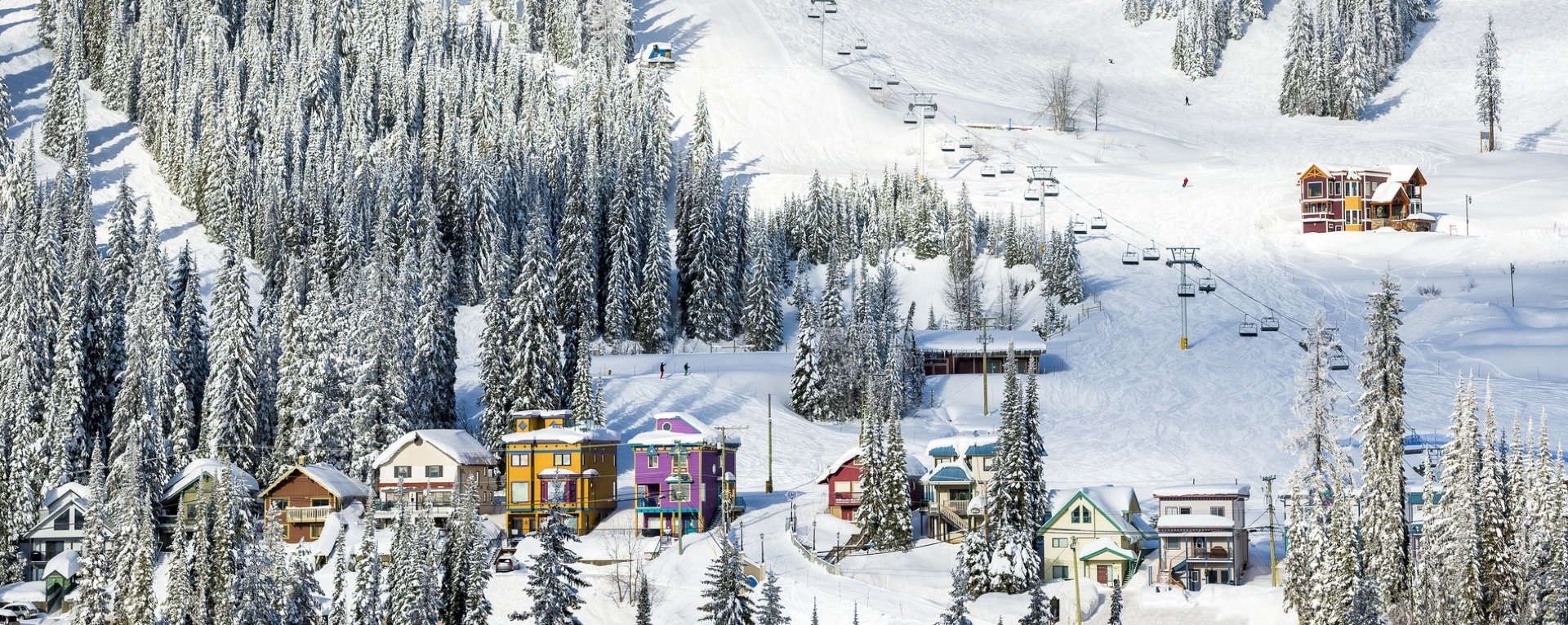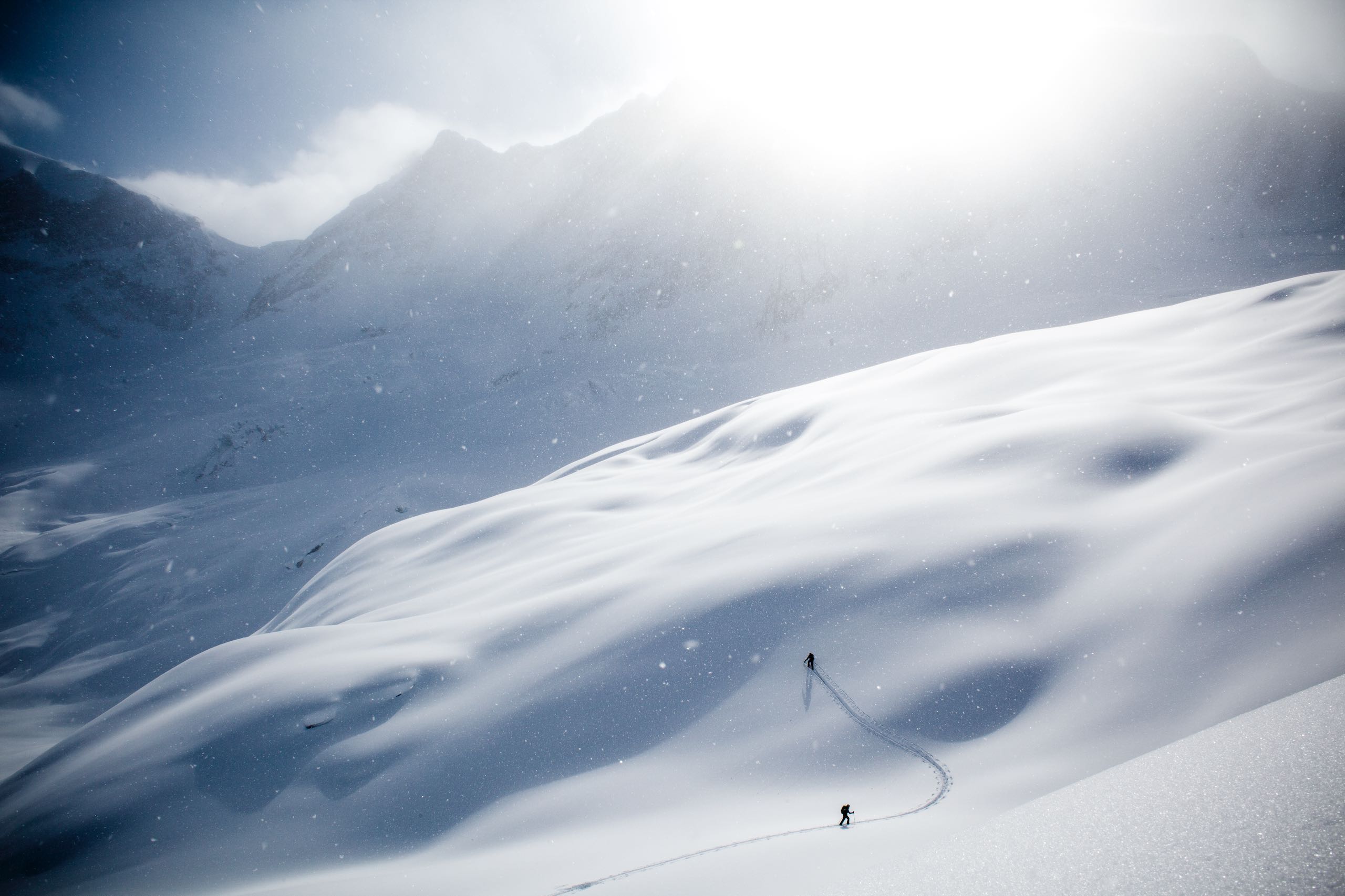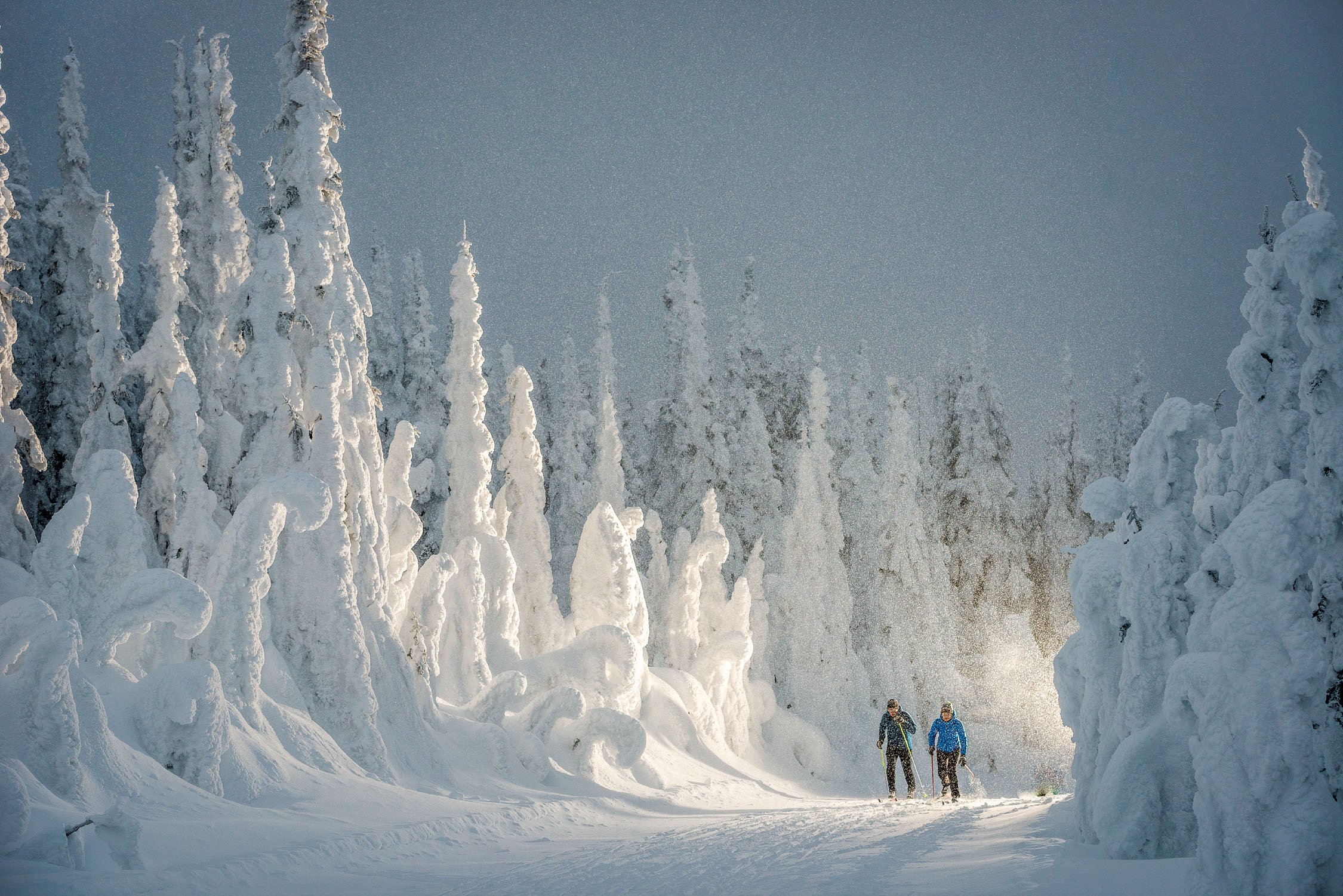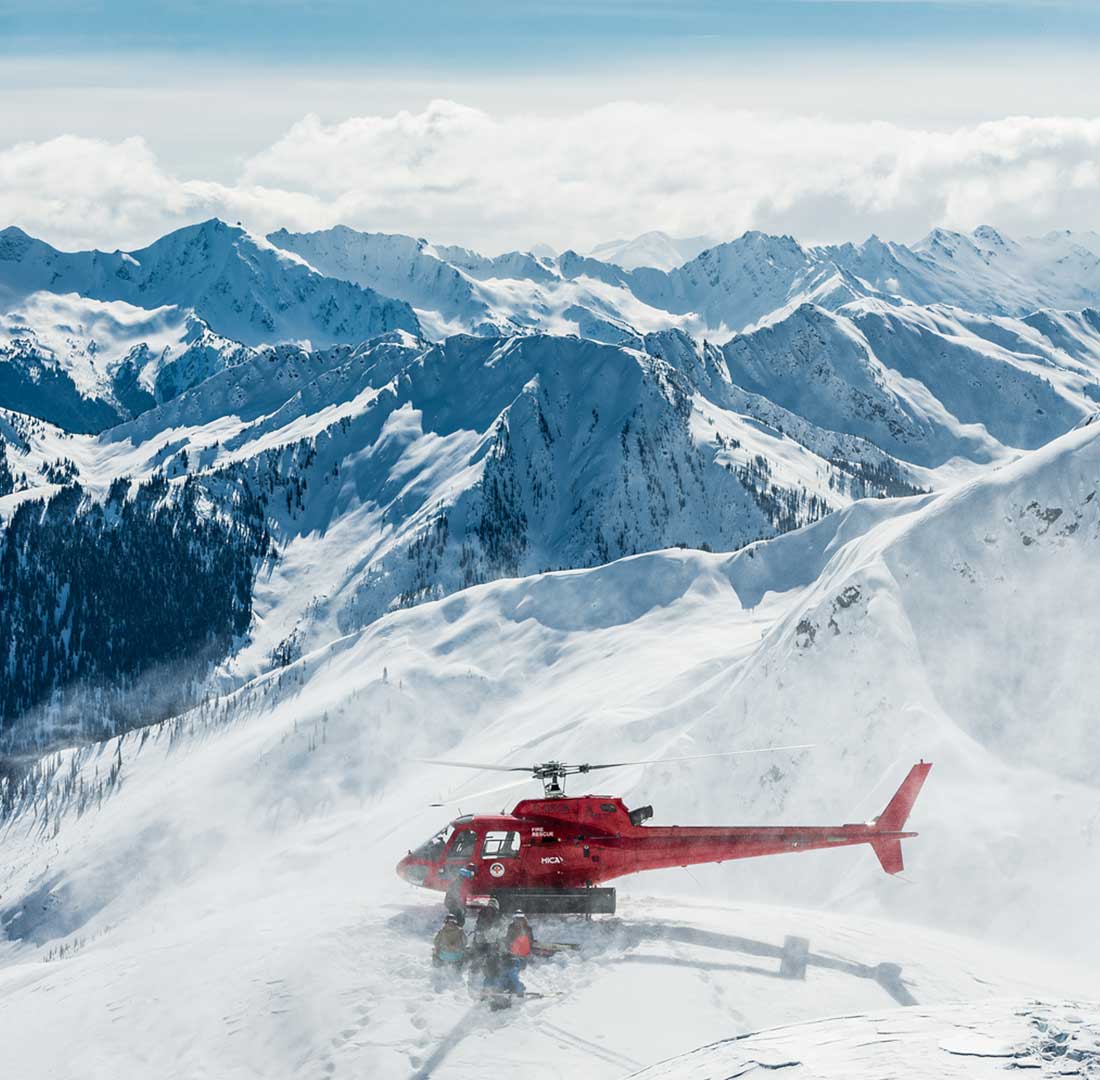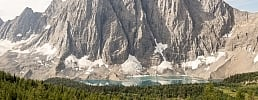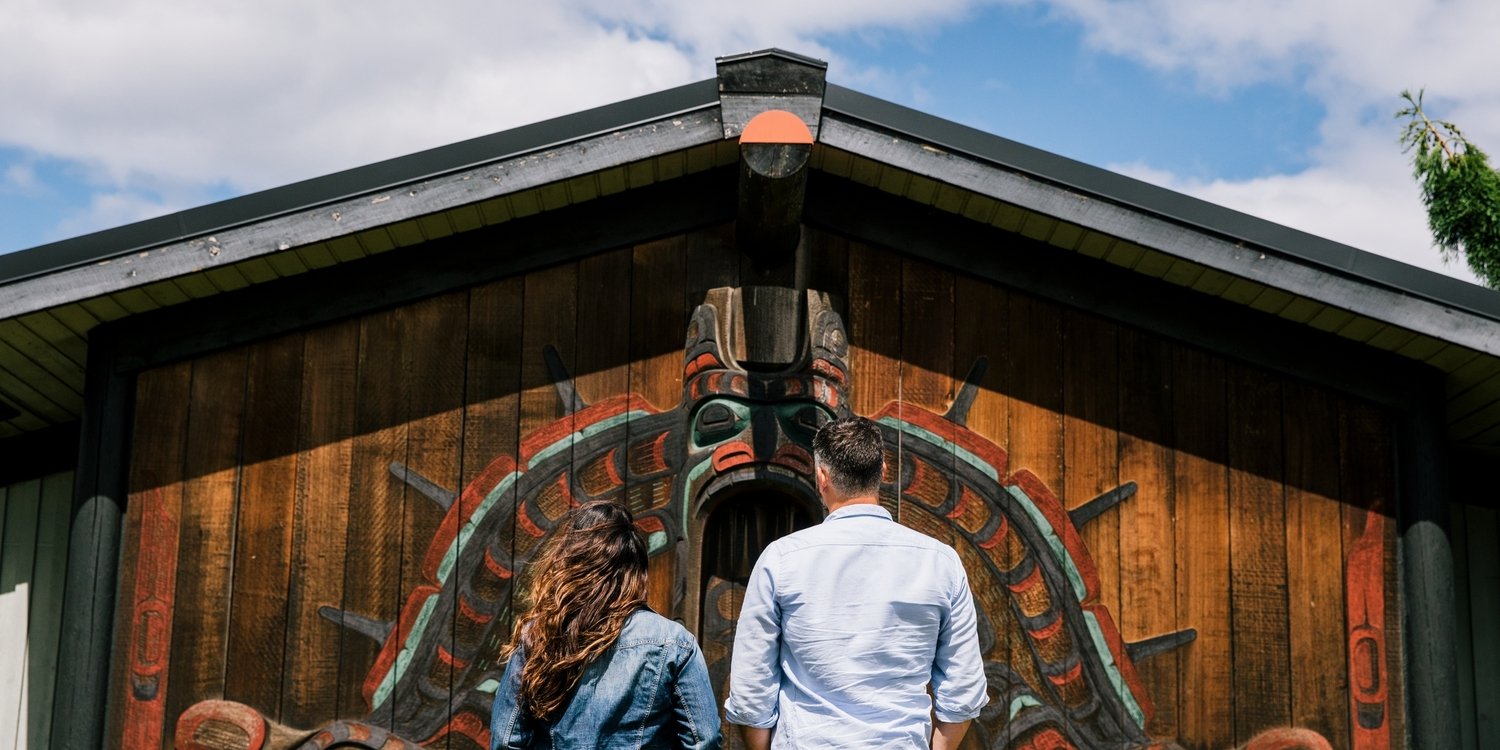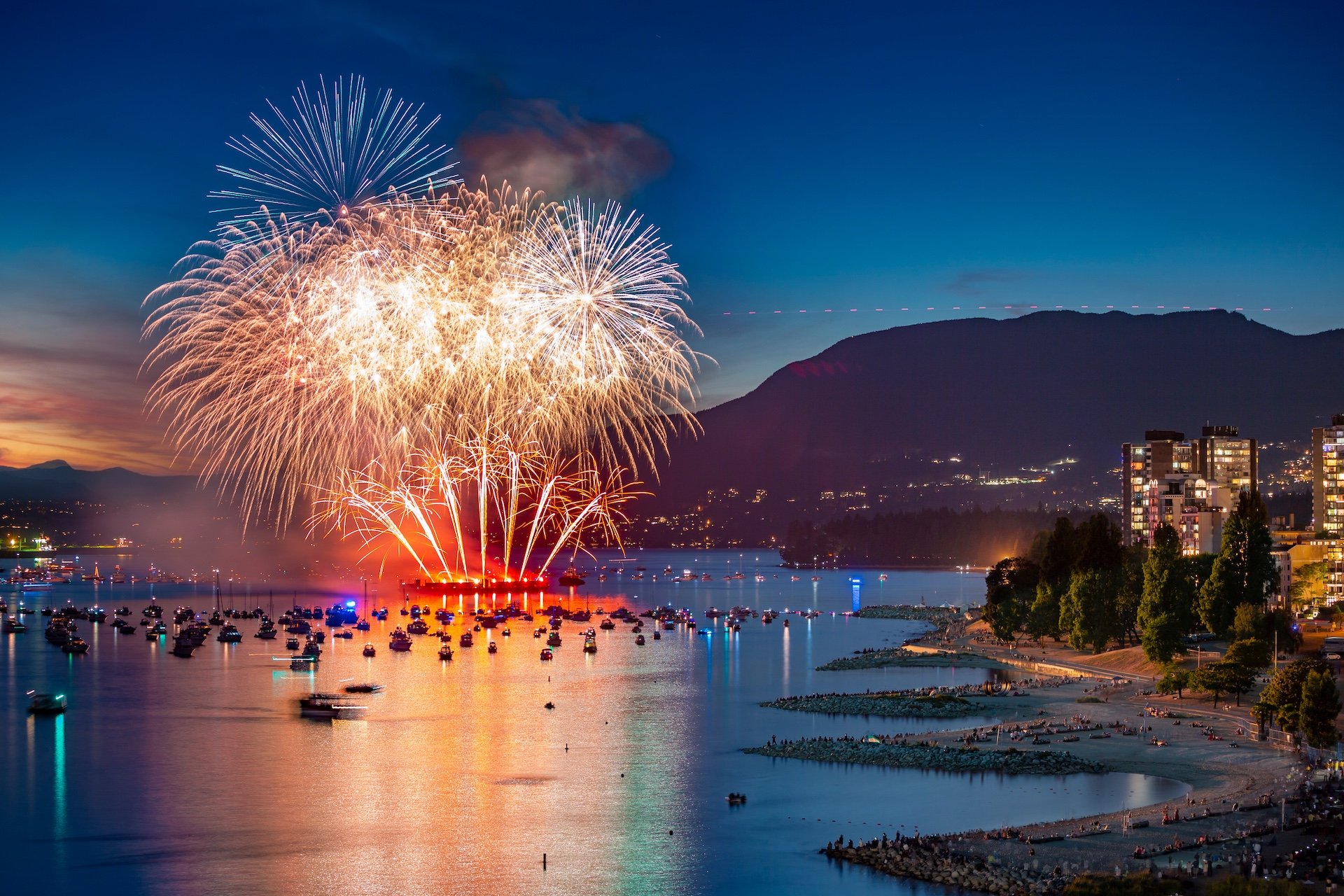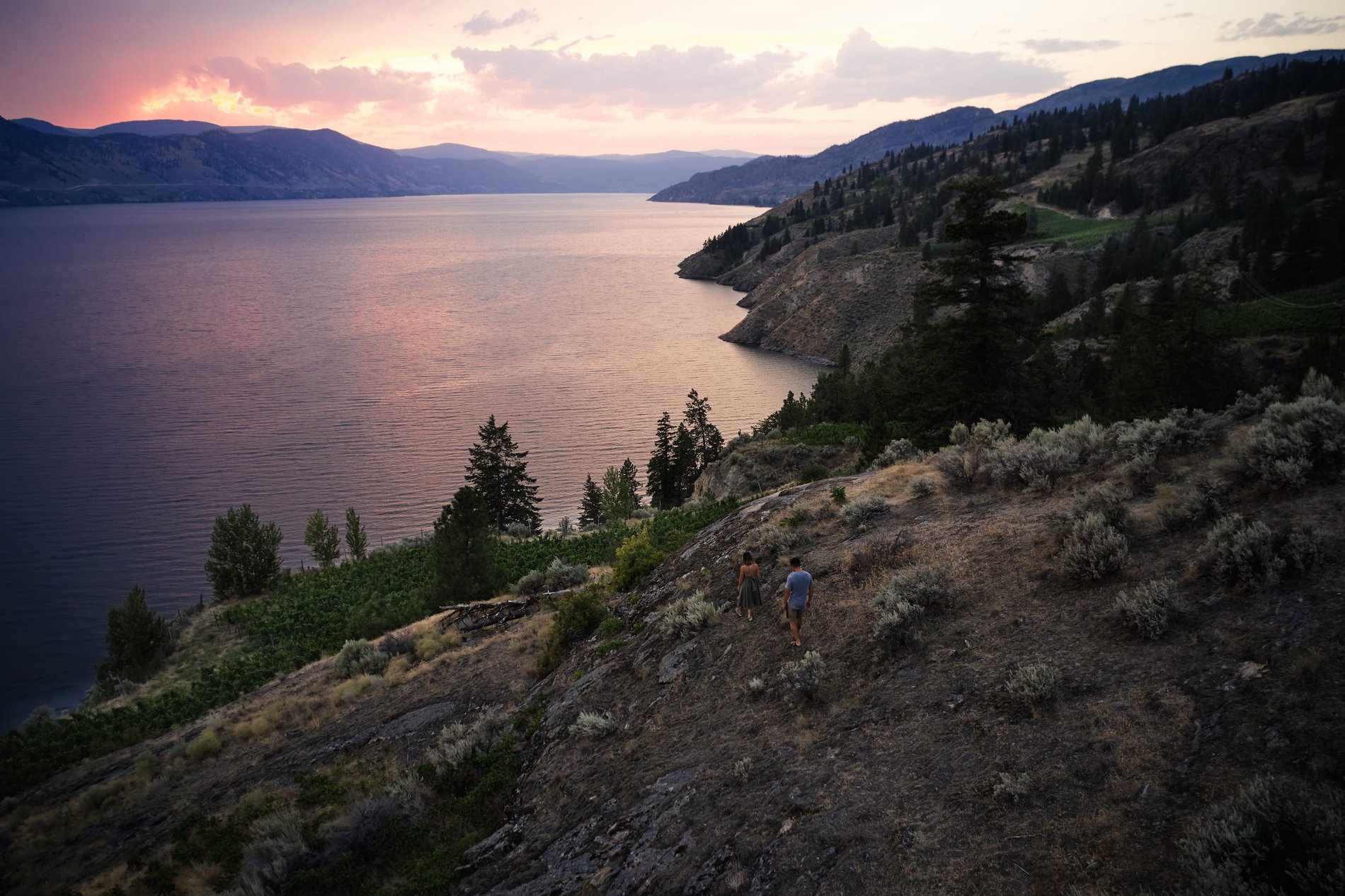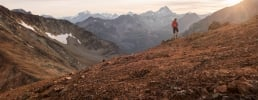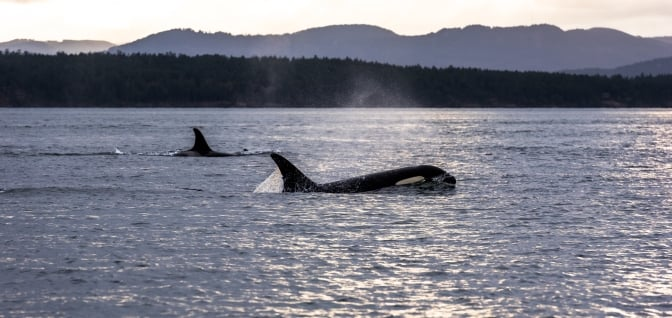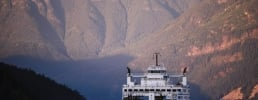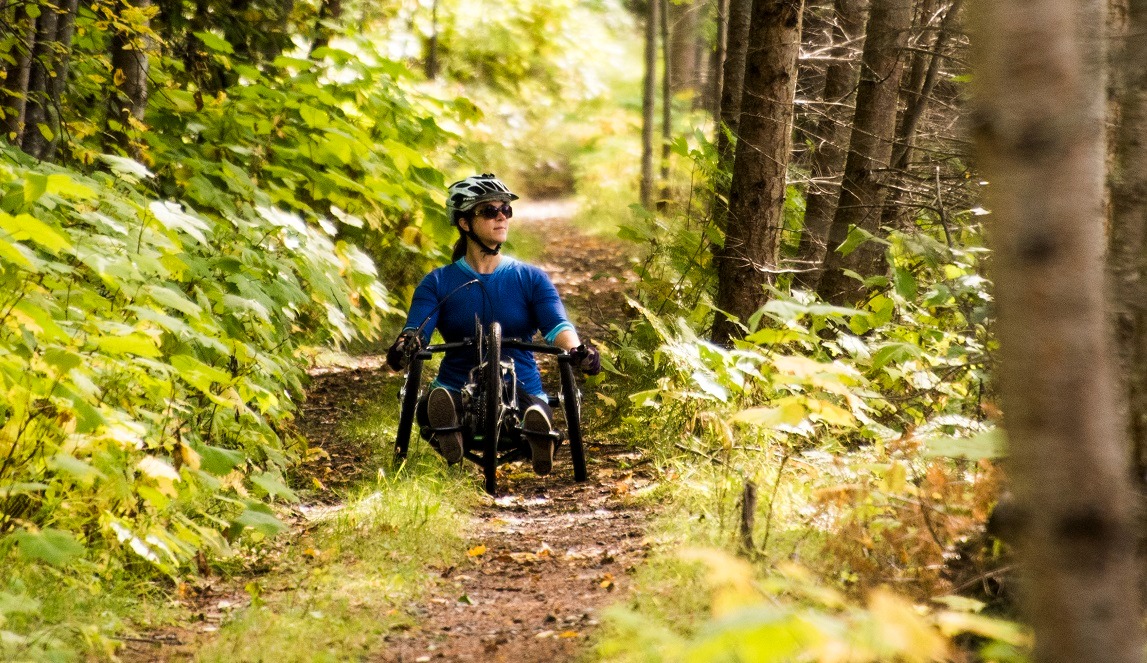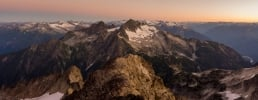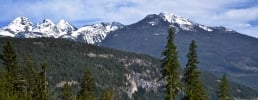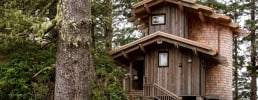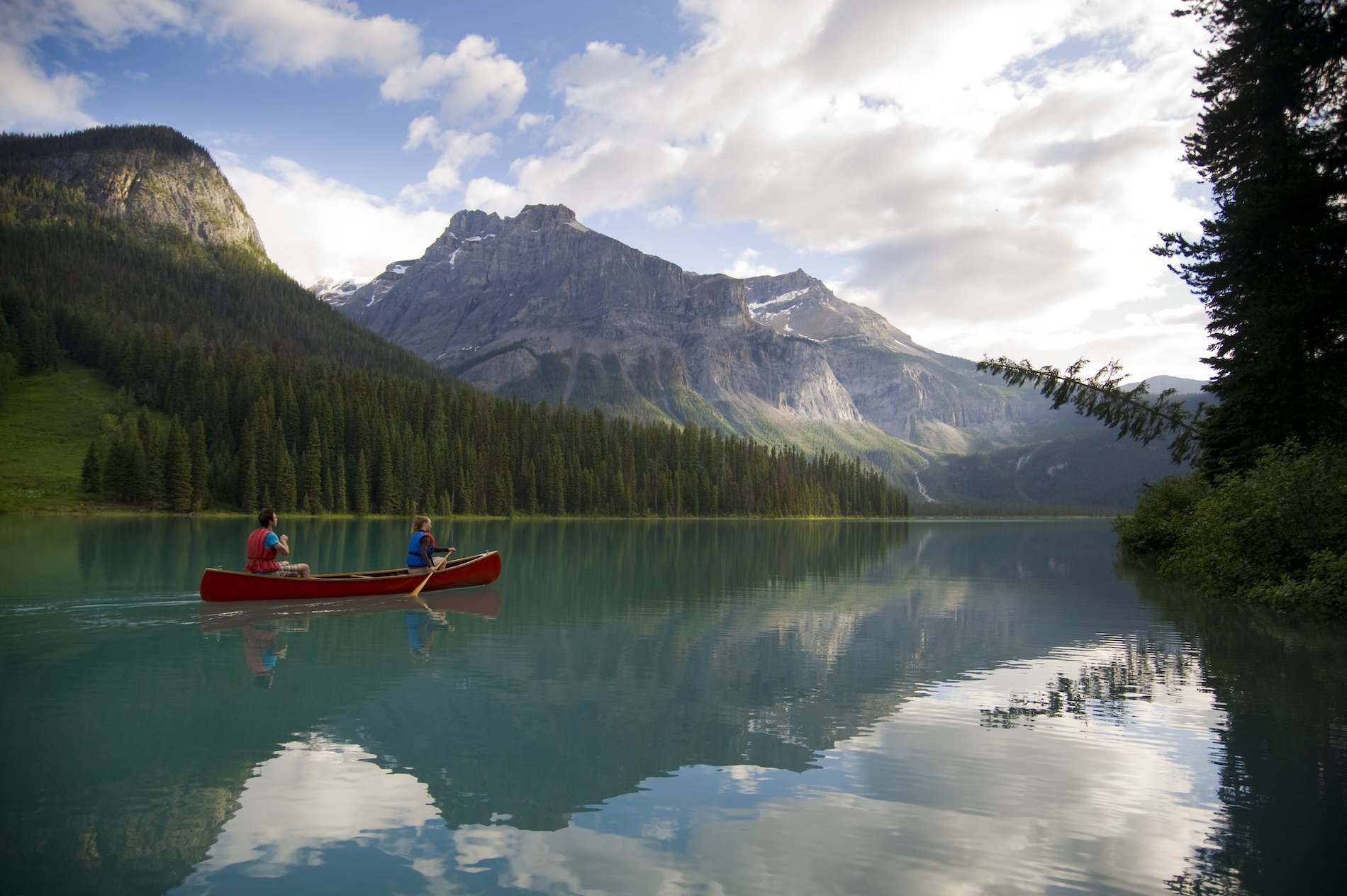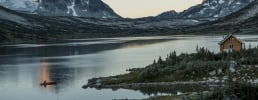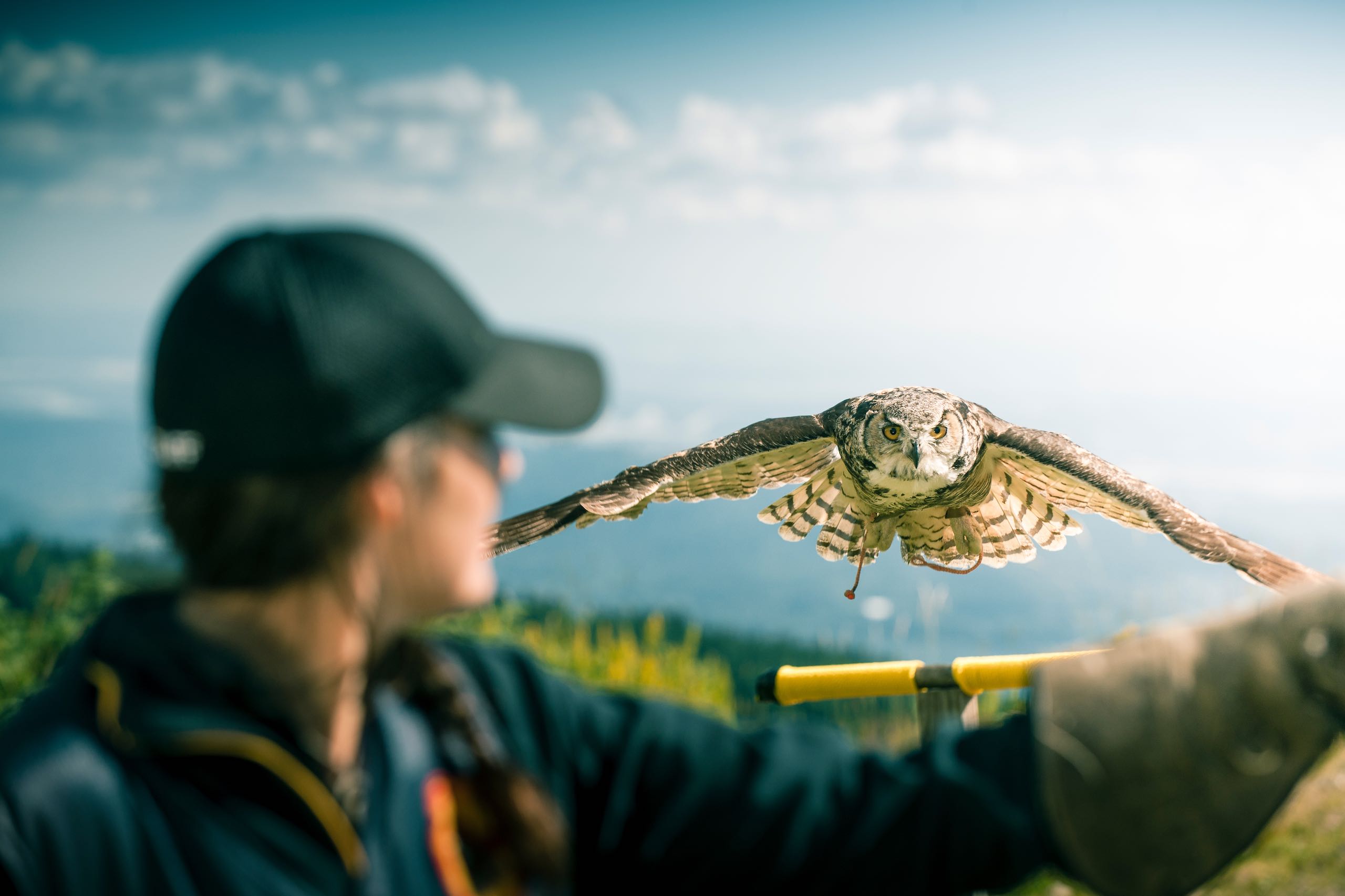 Grouse Mountain | Destination Vancouver/Grouse Mountain
Grouse Mountain | Destination Vancouver/Grouse Mountain  Grouse Mountain | Destination Vancouver/Grouse Mountain
Grouse Mountain | Destination Vancouver/Grouse Mountain Celebrating Earth Day in BC
April 12, 2022
Earth Day (April 22) serves as an annual reminder that all of us – the tourism community, businesses, policymakers and individuals – need to act today, and every day, to safeguard our planet.
Whether joining a whale watching excursion guided by a conservation-focused tour operator or visiting a wildlife refuge that rescues and rehabilitates endangered animals, BC offers plenty of opportunities for locals and visitors to learn about species and habitat preservation. Keep reading to learn how you can support, and learn about, BC’s animals this Earth Day.
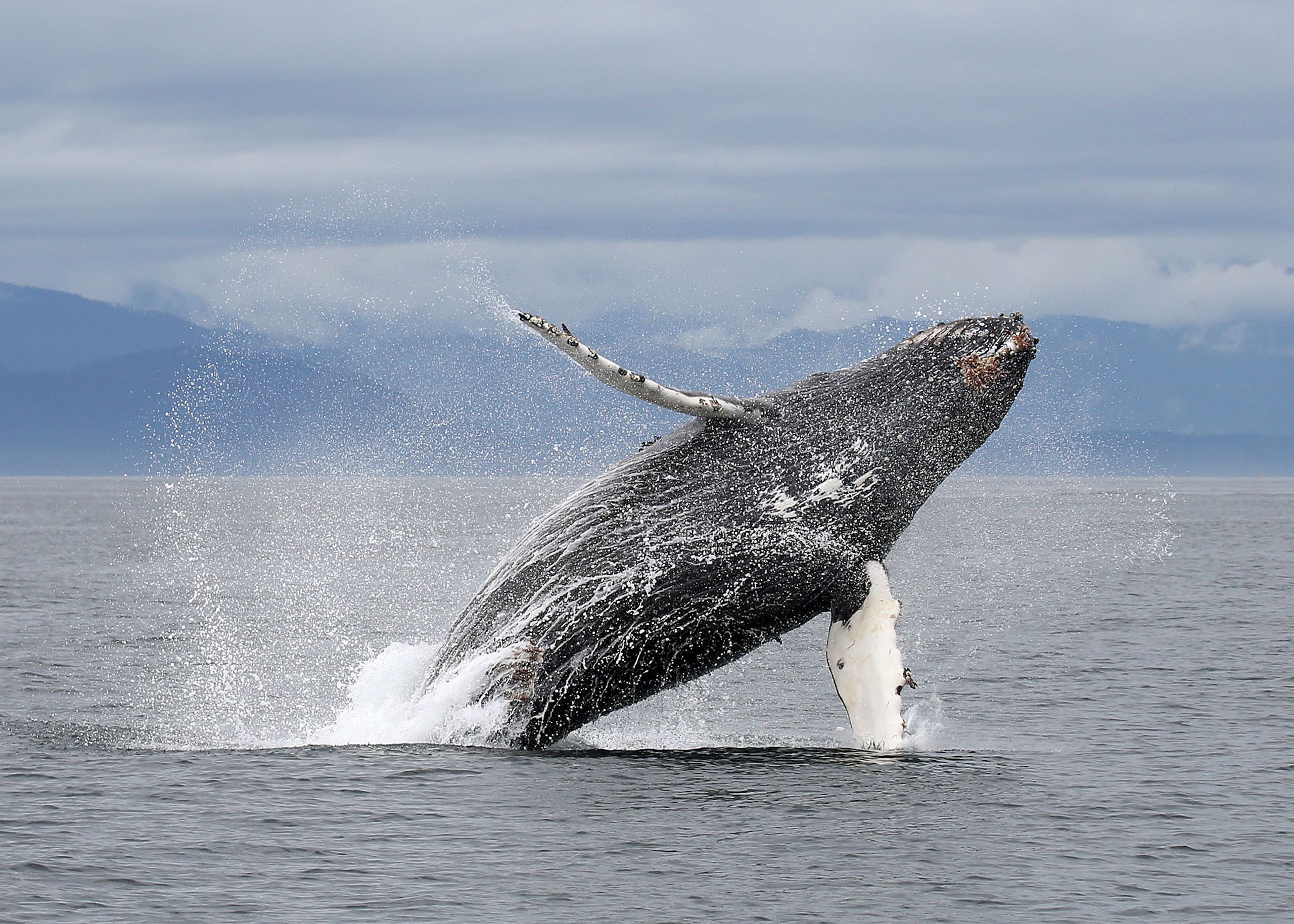 Victoria | Eagle Wing Tours/Valerie Shore
Victoria | Eagle Wing Tours/Valerie Shore 5 Whale Watching Tour Operators that Promote Ocean Conservation
BC is one of the best places in the world to view orcas, humpback whales, grey whales and other marine species. Victoria, in particular, is renowned for orca sightings – the coastal city sits at the centre of the world’s highest concentration of orcas, and during whale watching season the success rate for spotting the distinctive black-and-white mammals can be as high as 95 percent. Whale watching in BC starts as early as March, when 22,000 Pacific grey whales arrive along the west coast of Vancouver Island, headed for their summer feeding grounds in the Bering Sea. The journey – spanning 8,000 kilometres (5,000 miles) – marks the longest migration route of any animal.
In summer, orcas can be seen from Vancouver and Victoria, with an estimated 86 individuals residing between the mainland and Vancouver Island. And in May and October, wildlife enthusiasts can glimpse humpback and minke whales in the waters near Prince Rupert and northern Vancouver Island. These sustainably-minded tour operators can help you see local whales in spring and summer – all while supporting ocean conservation and protecting marine habitats. Keep your camera close!
- Ocean Outfitters, Tofino. Hop aboard an inflatable zodiac and zip through the pristine, uninhabited wilderness surrounding the west coast of Vancouver Island. Along with humpback whales and grey whales, species on show include sea lions, porpoises and sea otters. Conservation commitment: Ocean Outfitters is actively involved in efforts to protect wildlife living in Clayoquot Sound’s temperate rainforest ecosystem, with the majority of trip fees going toward projects that improve wildlife welfare, advocate for changes to legislative policy, promote education and research, and champion carbon action.
- Coastal Rainforest Safaris, Port Hardy. Cruise through the territory of the Kwakwaka’wakw people, where humpback whales, orcas and other marine mammals frolic in waters surrounded by fragrant cedar forest. Conservation commitment: Coastal Rainforest Safaris is a member of the North Island Marine Mammal Stewardship Association, which means abiding by a code of conduct, conducting marine mammal research and conservation, and providing responsible wildlife viewing experiences.
- Prince of Whales, Victoria, Vancouver and Telegraph Cove. With sighting success rates over 95 percent, Prince of Whales takes guests to whale hotspots like the protected waters of Johnstone Strait and the southern Gulf and San Juan islands, where orcas and humpbacks often roam. Conservation commitment: In addition to adopting orcas from the Vancouver Aquarium – with fees supporting research and conservation of the southern resident killer whale and other marine life – Prince of Whales shares data with the BC Cetacean Sightings Network, is a founding member of the Pacific Whale Watch Association, and holds membership with 1% for the Planet.
- Ocean Ecoventures, Cowichan Bay and Parksville. Set sail on a half or full-day whale watching excursion, where you can spot transient orcas, humpbacks, grey whales and minkes. The company boasts the highest sightings of orcas and humpbacks on Vancouver Island. Conservation commitment: Ocean Ecoventures is a member of 1% for the Planet, donates annually to non-profits supporting whale and wildlife conservation efforts, and operates vessels with the quietest sound footprint in the industry. The company also partners with Bullfrog Power to reduce its carbon footprint, and uses recycled or biodegradable products throughout its operations.
- Vancouver Island Whale Watch, Nanaimo. Clamber onto an open zodiac-style boat or a semi-covered vessel for a trip through the Salish Sea ecosystem to see orcas and humpbacks, along with sea lions, porpoises, seals and other marine wildlife. The tours are guided by marine naturalists with an academic background in marine biology – many of the guides are also whale researchers. Conservation commitment: Vancouver Island Whale Watch is BC’s first whale watching company to take visitors exclusively to healthy growing populations of whales, avoiding the endangered southern resident orca population. The company also donates $2 from each seat sold to local marine conservation initiatives, and offers research-based tours whose proceeds are donated directly to marine conservation. Plus, it collects data on every whale watching trip, and provides its findings to the Center for Whale Research, BC Cetacean Sightings Network and Keta Coastal Conservation.
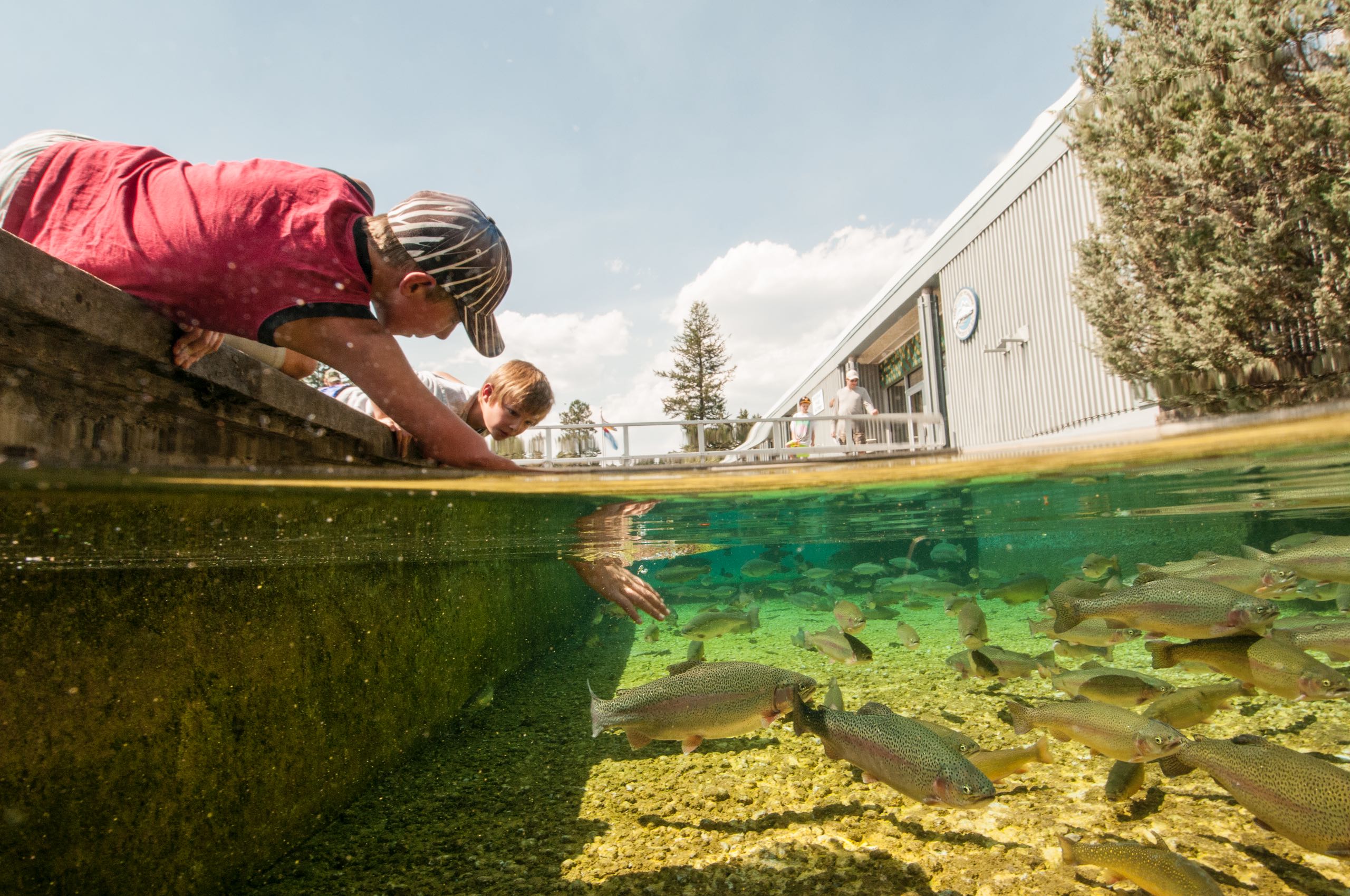 Kootenay Trout Hatchery and Visitor Centre | Destination BC/Kari Medig
Kootenay Trout Hatchery and Visitor Centre | Destination BC/Kari Medig Visit A Wildlife Conservation Centre In BC
BC is home to tens of thousands of plant and animal species living in a rich diversity of habitats and ecosystems – and over 1,800 of them are endangered. Thankfully, conservation centres across the province are actively engaged in species preservation and research while educating visitors about the importance of protecting these animals and their habitats:
- Osoyoos Desert Centre, Osoyoos. This interpretive centre is situated on the southern edge of the Okanagan Valley, in a habitat referred to as “Canada’s pocket desert” – one of the country’s most rare, fragile and endangered ecosystems, and home to one of the highest concentrations of rare and at-risk species. The centre works to conserve locally threatened habitats, including 27 hectares (67 acres) of antelope-brush, one of the four most endangered ecosystems in the country. Nearby, the Nk’Mip Desert Cultural Centre oversees a rattlesnake research program that tags and tracks the movements of reptiles such as the Great Basin gopher snake, a threatened species. Guests can see the snakes up-close in the centre’s “Critter Corner” or learn about desert ecology and wildlife at the “Living Land” display.
- Grizzly Bear Interpretive Centre, Golden. Eager to see a grizzly bear (blue-listed, or of special concern)? Stop by the grizzly bear refuge on Kicking Horse Mountain Resort, where Boo – the resident orphaned grizzly bear – roams his eight-hectare (20-acre) habitat, foraging and playing as he pleases. The refuge offers daily interpretive tours in the summer, as well as a “ranger assist program” that grants guests behind-the-scenes access to Boo as they learn about refuge operations. Here’s a peek at Boo emerging from his den on March 21, marking his 20th year.
- Grouse Mountain, Vancouver. Grouse Mountain Resort houses a refuge for endangered wildlife, including resident grizzly bears Grinder and Coola – a live camera broadcasts them snoozing in their den during winter, though guests can see them roaming their habitat when they wake up in the spring. There are also owl “ambassadors” that help to educate visitors about the nocturnal birds; in the summer, Owl Talks are hosted daily by a wildlife specialist. Grouse Mountain is also an active participant in the North American Hummingbird Monitoring Network, maintaining feeding stations and carrying out hummingbird monitoring sessions every two weeks in the spring and summer.
- Kootenay Trout Hatchery, Forte Steel. The Kootenay Trout Hatchery, operated by the Freshwater Fisheries Society of British Columbia, rears up to three million rainbow, cutthroat, brook char and kokanee baby trout each year to enhance local recreational fishing opportunities. It also raises the red-listed (endangered) white sturgeon for conservation purposes. Guests can drop in year-round and take a self-guided tour (guided tours are available daily from May through August) – highlights include nature walks providing education about native plants, birds and animals; a catch-and-release fishing program in the children’s fishing pond; and an interpretive area with aquaria, educational models, and displays.
- North Island Wildlife Recovery Centre, Parksville Qualicum Beach. Operated by the non-profit North Island Wildlife Recovery Association (NIWRA), this rehabilitation facility cares for animals with all types of needs, including birds with broken wings, orphaned black bears and electrocuted eagles. Its main goals are to reintroduce as many animals back into the wild as possible, and educate the public about wildlife and environmental issues. Visitors can see the largest eagle flight enclosure of its kind in Canada; a Museum of Nature showcasing the animals of Vancouver Island; an interactive learning centre; and enclosures allowing close access to more than 60 resident, non-releasable animals.
- The Raptors, Duncan. Cozy up to birds of prey and learn the real story of these silent predators – such as the alarming rate of decline of raptors, with nearly 30 percent of the global population considered threatened, vulnerable, endangered or critically endangered. The Raptors endeavours to educate people about birds of prey to inspire a sense of responsibility for protecting these majestic avians and their habitats. Activities include daily flying demonstrations by eagles, hawks, owls and vultures; opportunities to hold a falcon or meet an owl face-to-beak; and interactions with raptors while learning about their behaviour, diet, habitat, and conservation needs.
To download high res images please visit Destination BC’s Content Hub.
